#your entire existence is described as another person's greates failure
Text
Do you ever think about how horrible of a title "Batman's Greatest Failure" is? How degrading and dehumanising? Everything you achieved in life is forgotten and reduced to the way it ended.
You aren't a person. You are a failure. Your whole life is pushed aside and made a part of someone else's life story. You never mattered, if it weren't for that person you would have meant nothing at all.
Aren't you glad? Aren't you glad you are remembered as something? Even if that something is just saying your whole existence equals just to a mistake in someone's life? An old page that everyone is so desperate to forget. A lapse in judgement. A regret. The people you saved, the people you loved, what you did in life, none of that matters. All that matters is how another person was affected by your death. That is all you will ever be. Everything you did and didn't do will always be irrevocably tied to that person, for better or worse.
You are unable to exist without that person and the only way for you to exist is through his perception of you. The only way for others to see you is to look at you through his biased interpretations of who you were.
You weren't a child or a hero or a martyr or a son or a victim. All you ever were, and will be, is someone's "Greatest Failure".
#can you tell im having Thoughts about jason again#it just came to me all of a sudden#your entire existence is described as another person's greates failure#you don't have a voice in how he tells your story#you can not correct him because yiu are dead. and even after you arent#he will never listen to you#you cant control your own story#your narrative is puppeteered by a narrator who paints you as a mistake#who HAS to paint you as a mistake because otherwise he would have to answer questions that he cannot answer lest they break him#works both in and out of universe#bruce lied abt him bc he would break otherwise#and dc lied bc otherwise ppls would start questioning batman mythos#jason todd#red hood#aditf#robin#robin jason#character meta#meta#jason todd meta#batman#batman comics
278 notes
·
View notes
Note
hi! i hope you’re having a nice day! so i had this question about how you manage to beat perfectionism (if you have it)? because i’m a raging perfectionist and i can’t even get myself to sit down and write anything at all. i’m so afraid of sucking and i don’t know how to get over that fear and actually start writing and getting better at it. any advice?
I absolutely struggled with perfectionism. If you haven't seen THIS video, I talk about it here! But everything you've described here was debilitating to me at one point. If you told me a few years ago that I wouldn't care if I wrote badly now, I wouldn't believe you!
The thing about writing is: you're going to suck! It's going to be bad at some points. You're going to hate the work. You're going to think it's bad. It WILL be bad! You're going to judge the work and worry about others judging it, and sometimes, others WILL judge the work. On the flip side: you're going to write amazing things. You're going to LOVE it! Other people are going to notice and also love it! Good and bad can't exist without each other (but "bad" likes to make us think otherwise haha).
When you write badly, what's the worst that's going to happen? I thought of this question a lot, and it's something I repeat to myself in the times I still feel insecure or like I need to "perfect" my work. The worst that will happen is likely: you won't like what you wrote, will set what you wrote aside, or will come back to edit it. Perhaps your fears also stretch into perception from others, and in that case, the worst thing that will happen is that someone may say "ooh I really didn't like this person's work," and what does their opinion really do to your work? It doesn't do much (it can affect self-esteem and confidence, of course, but it doesn't actually "demote" you as a writer). I know that seems like a LOT to accept, but writing is so subjective. I've probably shared work on here that people don't like, but nothing's actually happened to me because of it except for me feeling a bit embarrassed.
Accepting that my writing can be bad (and that it's okay) was the first step to getting over my perfectionism. It actually made me grateful to my work--I was brave enough to put words down on the page, what did it matter if they weren't "great?" Of course, this didn't happen overnight (the entire process took about 3 years for me). It was baby steps at first: talking myself through anticipating the fear of writing, then actually sitting down to write, then talking myself through moments of self doubt. Sometimes, the perfectionism still won, and I quit a lot--this is also part of the process! But the important part was that I kept trying even when it was very hard.
Something what also helped was identifying WHY I felt the need for my writing to be perfect. For me, this was mostly about embarrassment and fear of judgement. I felt kind of humiliated if I wrote something "bad" and thought someone else might also find it embarrassing or "cringe" (even if I WASN'T sharing it). Fear of cringe is so HUGE among writers! The thing is, you can't control how other people perceive your work, but you can control how YOU perceive your work, and since you're your #1 reader, making sure you like what you write (and just YOU) is top priority.
Another thing: I was a HUGE perfectionist because I didn't trust myself as an editor. I didn't think I was capable of making my work "better" and at times, I wasn't. But the only way to get better at editing is to practice, and practice means you're going to have "failures" or "errors." It's fine! Every single writer has this issue--you're not alone!
Finally, I also looked inward to assess why I was feeling this way beyond my internal fears. Another reason was my genre. I was constructing an identity as a "literary fiction writer" and that damaged my confidence A LOT. I love literary fiction and I still write it, but crafting an entire identity as a LitFic Writer was personally damaging for me because any step I made that "strayed" from this identity made me feel unstable. I realized that my art isn't supposed to do that to me because I don't WANT it to. That's when I made changes and introduced more "fun" and lightness into my process again (I now write both genre and literary at the same time)!
A bit of a "practical" approach: at one point, I decided to start a brand new novel in a genre I had zero experience in and write the opening 10k words of it in a day. This SLASHED my perfectionism because I quite literally had NO TIME to overthink the work (even when I wanted to). Not practical for everyone, but it helped me astronomically because at the end of it, I wasn't like "ugh I hate these words," I was like, "WOW, I'm so proud of myself for writing this much in one day and getting so far into this new project." Super short writing sprints (1-3 minutes) can be helpful for this too.
Hope this helps, I've been here, and I can tell you that it can get better from here, it just takes a couple changes and some persistence! You sort of have to practice not being a perfectionist, just as you practice writing--it's hard, but very rewarding!
10 notes
·
View notes
Text
I understand now why
I isolated so ruthlessly all those years. A lot of it was fear, truly. The anxiety of a thousand eyes staring down a dying sun. But I realize that with that isolation came undying strength - looking back on all I have experienced in life, I learned to die gracefully. In silence. Without a peep heard by anybody. And the things I've written, the stories, the experiences I talked about lay a legacy of heartbreak and disappointment in my life. I shouldn't be surprised. This is what has happened in my life over and over again. And I understand. Before any of this happened, I have been a lot and always was a lot.
I searched outside of my comfort for a person that would heal my ills, and all I found was an even worse nightmare. That's my fault. But it's ironic that all my wrongs are the crux of these songs. The way forward is paved with failure and mistakes. You learn to die so you can learn to live. And it happens over and over. A certain coldness enters your spirit when you realize these things. That a person can cry in front of you with their entire spirit, and you can just stare back at them coldly. Knowing that it doesn't matter - they were destined to die. It's up to them if they will choose to live
I choose again and again to live. Even when I knew at the age of 5 of the great pain that existed in front of me. Of the imperfect vessel, life, and perfect pain that awaited me. I am the ghost of your lives. I walk the dreams of the in-between. I was made to show you that purity can exist in an imperfect world. I come into your life and force you to overcome your karmic cycle, or else suffer even worse karmic cycles. I am the harbinger of all that truly makes you scared - to connect so deeply with another that it feels like touching the divine. That's what they call me, describe me - as if I come from another world. Well, here I am.
And my purpose isn't solely to assist in your karmic journeys, but to establish something more important - the reconnection of the divine to the unreality we live in. Connect the chords, live again, starchild.
destiny, embrace
0 notes
Text
SSO Horrors
A post diving into how dark this franchise’s storyline gets and ideas for a horror game that will never actually be created. SPOILERS for the SL books and SSO storyline.
This idea originally came to me after reading the second book of the SL trilogy, The Legend Awakens. Props to Helena Dahlgren for the Pine Hill Manor scenes in that book; I was completely left on the edge of my seat the entire time. Linda’s whole experience was definitely an unexpected thriller for the children’s genre; cutting her leg on a broken window, exploring an old creepy mansion owned by the centuries-old psychopath that was targeting her, her friends, and their horses, being chased down halls and having to barricade herself in rooms to be protected from the apparent non-human dark riders (not to mention the way Dahlgren describes the animal sounds and scratching that they made, chills), and, to top it all off, nearly dying from sepsis due to her cut becoming infected.... if that’s not horror game material, I don’t know what is.
If you can’t already tell from the title of this post, I am a huge fan of the horror genre. The suspense-packed and often deep moral stories are always a fun watch/read. I personally am currently making my way through some classic Stephen King books that I haven’t read yet which was sort of what inspired this post.
Taking a look at SSO’s storyline on the surface level, we see a classic dark vs. light story, with horses and female heroines as the main points. However, there are quite a few darker elements hidden among the story quests, most of which would only be noticeable to the eye of the older audience of the game. The potential for this plot to be upped to a more mature level as far as darker themes go is definitely there. Regardless, the already existing underlying themes have some heavy themes...
- Teenagers, around the ages of 15-19, have been tasked with saving the world from a demonic entity. They have been granted special powers to do this with. These powers however can be extremely dangerous, as we see with both Alex and Catherine with their Lightning Circle incidents, in which they almost killed living beings. These factors combined would no doubt take some sort of psychological toll on the Soul Riders, as they are so named.
- Brainwashing and cult-mindset was a huge theme brought up with Justin’s kidnapping. He was abruptly cut off from the outside world, had his memories removed, and his mind artificially filled with thoughts of Garnok and world domination. It’s clear when he is rescued and goes back to his home that he’s depressed; his Midsummer dialogue a year back was “My dad thought it would be good for me to get out. I don’t do that much anymore” (not exact but close enough). When he talks to his mother during the memories quests the first thing he jumps to seeing her pregnant with him is “I wonder if she’d would be so excited if she knew all the terrible things I did”. To add to that, upon getting Justin back home, Thomas tells our character “If he keeps having these dark thoughts, I’ll have to turn to the druids.” That in itself was pretty unsettling. All this dialogue was put there to draw attention to the mental affects of literally having your brain tampered with.
- Elizabeth’s story was probably one of the saddest in my opinion. She had to stand by while her friend group fell apart, one going on to die, one going missing, and the other two continuing to split away from her. She then felt it was her responsibility to make up for her sisterhood’s failures, staying with the druids and eventually helping recruit new Soul Riders. Seriously though, imagine that. She saw what pain the magical war brought to her and her friends; knowing that she was pushing four more kids into a situation like that would’ve been devastating (here comes the morals vs. duty idea). Our character must have been a whole other level of that feeling. She saw what Catherine went through with her magic - the fear, the near madness. Then of course she goes on to imprison her close friend’s son (it appeared from the quests that she was closest to Catherine so that just adds to the pain). And to end it all, she sacrifices herself to save a girl who she considered a daughter.... jeez.
- Catherine is another issue here for obvious reasons. A teenage girl is entrusted with goddess-level powers, then nearly goes psycho from the inability to control them. You can clearly tell from her last few diary entries how exhausting that was and how happy she was to finally have a somewhat normal life with her husband and son.
- And finally of course we have the DC gang. Mr. Sands is a basket case all on his own, a man who has used mind control (arguably in my opinion one of the creepiest forms of dark magic out there) on numerous victims including his own grandson, a man who legitimately worships a demon, and not to mention has it out for a bunch of teenagers. His whole backstory with Rosalinda made me feel some sort of sympathy for his character (he watched her nearly be drowned to death), and I’m actually quite curious as to where they’re going to take that. Also, The Nightmare Institute? That could be a horror game within itself. All we know so far about that place is that humans and animals are tested on with dangerous materials (ex. Mr. Anwir). Let’s not forget to mention the dark riders who apparently have animal qualities now? (as it was described in the SL books)
Ok so we can clearly see that SSO’s storyline gets a bit dark. But just imagine; a Pine Hill Mansion first-person POV game, where you’re in a situation similar to Linda’s, or even one in DC or the Nightmare Institute. Honestly this entire storyline could be turned into some Resident Evil plot lol.
But that being said, as much as it’s fun to speculate these types of things, I enjoy SSO’s storyline just the way it is. It’s enjoyable for me as an older player, but it’s also filled with great moral stories and motivation for young children, especially girls. I love the atmosphere of female empowerment, and it’s especially unique to SSO because around the time of it’s initial release, that wasn’t seen much in video games.
Might start during these ‘chat’ or ‘random things that come to my mind’ posts more often.
#star stable#SSO#star stable online#pine hill manor#mr sands#Dark Riders#darko#dark core#sso dark core#sl books#soul riders
55 notes
·
View notes
Text
Cheers to all the people reblogging that tragedy post for being extremely civil and reasonable by comparison to the usual Tumblr experience of going lowkey viral. You're all excellent human beings.
Since I'm currently moonlighting as a tragic fiction defense blog, however, I do want to indulge in some mostly good-natured grumbling based on major themes in the notes:
1. This is not actually why I hate tragedy - Listen man, I did explicitly say "one reason" people dislike tragic fiction, not "The Reason."
2. But poorly written tragedy is awful - So are poorly written happy/triumphalist endings! They can even (speaking as someone with trauma-adjacent flinch responses to certain things that Tumblr often describes as "soft" or "wholesome") be extremely painful to read, at times. Bad fiction is allowed to exist and you are allowed to criticize it accordingly without that badness being treated as a reflection on the entire genre to which it belongs.
3. Tragedy is not my cup of tea because real life is hard enough/stories that make me feel doom and helplessness are unhealthy for my depression/I'm too empathetic to handle characters suffering/etc - (a) You're super valid and I super support you but also (b) your experiences are not universal. To their great credit nobody in the notes has said this, but I have encountered FAR too many people on this website confidently claiming that only someone who has never faced hardship, and/or someone thick-skinned and unfeeling toward others' pain, could possibly enjoy tragedy. As a person who has in fact faced hardship and who cannot even squash spiders because it makes me feel too guilty, I personally resent this.
(When I was depressed tragic stories reminded me that flawed people who failed were still worthy of compassion, so y'know. People process their experiences differently and that's okay.)
4. Some authors use tragedy to punish the reader for caring about the characters and 5. Griping about ASOIAF/GOT, which I am choosing to address together because they are so frequently mentioned in the same breath - Okay. Rant incoming but while I have many complaints about ASOIAF (in fact I quit reading midway through) and even more about GOT (which I quit watching even earlier), I'm extremely tired of hearing people accuse GRRM of being a cynical edgelord merely because a lot of his characters die. Maybe it's just conflation of the TV show's poor execution with the writing itself, but I constantly encounter people framing the series' numerous deaths as a kind of Gotcha punishment (why are people so hung up on tragedy-as-punishment?!) for the audience for being naive enough to get attached and/or have hope - an admonishment that life is unfair and you should get used to it and if you're sad it's your own fault for caring too much.
#1, Martin has many flaws as a writer but failure to get inside characters' heads and make you care about them is not one (he gave a strikingly sympathetic POV to the dude who threw a 7yo out a window, ffs); #2, "Men's lives have meaning, not their deaths" is literally right there in the text. So if your takeaway as a reader is "these characters die, therefore their stories were meaningless and I wasn't supposed to care about them"...sorry mate but you may have brought the cynical edgelord-ism with you.
Just. As a general rule. No author on the planet wants you NOT to care about their characters, and if you feel like you're being punished for doing so then with limited exceptions you might be projecting your own feelings onto the author's motives in a very uncharitable way (that is also pretty bad literary analysis).
6. Tragedies are badly written if the reader can see another way out and 7. General discussion of tragic flaws/hamartia as punitive - I don't entirely agree but I don't actually want to grumble about this, I want to make a separate post because I think both points are useful and illuminating ones wrt the nuance of what I'm trying to say about tragedy as a story structure.
#DON/T RE/BLOG PLEASE#tiny bit personal and also I'm well aware that I'm doing a bit of indulgent ax-grinding#as I said 1000% valid for tragedy not to be your personal thing!#but I am extremely tired of tumblr moralizing nonsensically about it#my posts#on writing#tragedy stan blogging
35 notes
·
View notes
Photo

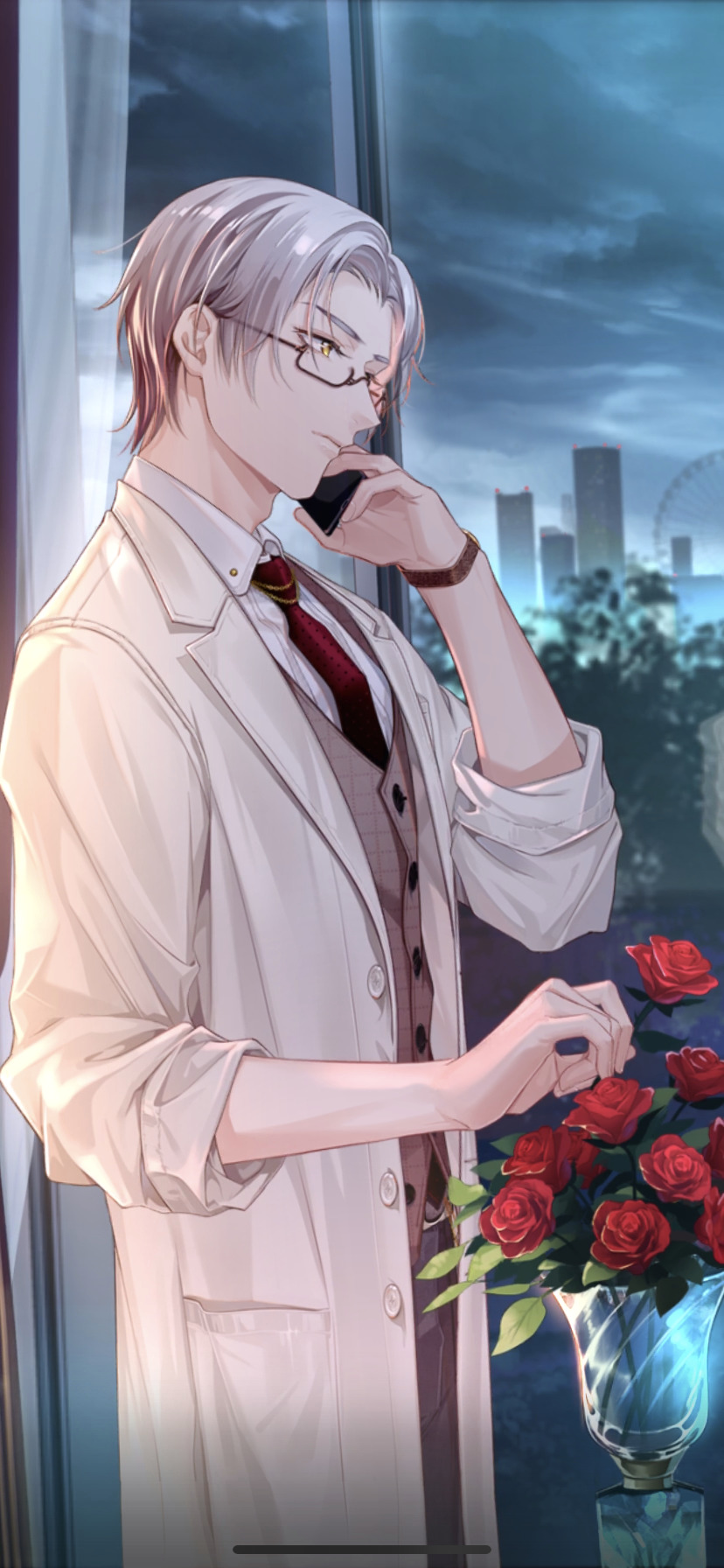
Xu Mo vs. Mo Yi [Character Study]
I can never get over the aesthetic of these two pictures placed side by side LOL. But, anyway, the point of this post is to nip any undue comparisons in the bud and claims of copying organize my thoughts and compare these two characters to highlight their similarities, differences, and further explore each character through these contrasts.
Q) If you like Xu Mo, would you like Mo Yi?
Honestly, I think this depends on what you like most about Xu Mo. I already knew beforehand that I gravitate towards characters who think 5 steps ahead, are predominantly logical, and scholars/gentlemen, so it’s not surprising I bias both Xu Mo and Mo Yi.
However, as I got to know Mo Yi further (Themis is around 6 months old now), I find that he’s distinctively different from Xu Mo on three crucial points that’ll determine whether people from either camp will like the other character.
1) Stance on Others
In a post for Xu Mo, “Into Your World”, I argued that Xu Mo is an alienated genius who had troubles getting along with others, until he mastered the social game as an adult. However, you can still see glimpses of this as he tries to understand MC’s world and shares his own.
To be fair, Mo Yi’s past is still under wraps but I feel confident in saying that, while he was probably highly intelligent compared to his peers [SR Sculpted Heart], his isolation doesn’t seem to come from his innate nature but rather his social position (there’s heavy implications that he’s like some sort of noble or something) [SR Snowy Pine Fairytale].
IMO, these backgrounds really shaped the way these two men interact with the world.
Xu Mo has a detached and indifferent view towards other people. They simply exist and don’t bring anything positive or negative to him. His ambition to ensure the survival of humanity reflects this too because it’s pure utilitarianism; everyone (apart from MC) can be sacrificed equally for the greater good. If anything, he probably finds other people to be interesting subjects to study, no matter what kind of person they are. IIRC the only time he expressed dislike to people, or a group of people, was when he told Hades he enjoyed killing thieves LOL.
Meanwhile, Mo Yi has an elitist streak to the point where he and his MC actually clashed opinions and debated each other [SR Warm Fingertips]. It’s incredibly ironic because he’s a psychiatrist who treats his patients without judgment, but at the same time he looks down on so many things and people (PUAs, people who betray love, hypocrites who only seek power and fame) [Ch2; Personal Story Ch1-3; SSR Moonlit Ball].
One of the things I noticed early on is that Xu Mo draws from the Eastern scholar archetype, “Xu Mo Character Study”, while Mo Yi actually draws more from the Western gentleman archetype.
So, just to summarize this section, Xu Mo is detached from the world naturally and likes to observe people and try to blend in. Mo Yi deliberately draws a line between him and others and, at times, has the casual cruelty of someone born as nobility (arrogance is carved into his bones, even if he tends to keep it low-key because he generally has a “gentle and polite” attitude).
2) Stance on Love
Xu Mo didn’t understand love, or really even emotions. Love is grown between him and his MC (there’s multiple analogies throughout the game about how their love is like a seed). I think [Ch25] pretty much sums it up for Xu Mo, where he goes through that emotional rollercoaster and muses about how, at the end of human evolution, emotions should be discarded. He also admits that MC taught him the “fear” of a normal person, because now he has someone he cannot give up no matter what, which goes against his previous utilitarian beliefs.
Compared to this, Mo Yi fell in love at first sight. Yes, you read that right. The “scientist and logical” archetype fell in love at first sight LOL. Not only does he acknowledge it right off the bat, but he fully embraces it too and believes that real love makes people better versions of themselves [Personal Story]. Mo Yi is a through and through psychiatrist in that he never underestimates how primal emotions (and love) can be.
Heck, not only is this central to his personal story, but we also have hints that one of Mo Yi’s parents fell in love at first sight with the other person (and he inherited their predisposition for that). Unfortunately, their love had a tragic end and Mo Yi seems to have a huge grudge against his father for whatever happened to his mother (again, Mihoyo is keeping this a mystery LOL), but Mo Yi explicitly confirms that even if his love leads to a tragic end he will still walk down this road and attempt to change it [SR Cool Summer].
IMO one other difference between them re: love is this exchange that lives rent free in my head which I saw in a Xu Mo/Reader/Mo Yi fanfiction LOL. Bear with me here.
Mo Yi: Wearing a mask for a long time will tire you.
Xu Mo: It’s enough just to wear one in front of the necessary person.
Xu Mo and his MC make great efforts to understand each other’s worlds, but this understanding comes from the doors he chooses to open to her. He reveals himself as much as possible, but I think he’s an inherently private person (and there’s all that Ares stuff) so there are times where he hides things so that he doesn’t worry his MC. I think this is enough to count as a “mask”. Sometimes he pretends he’s okay when he’s not.
On the other hand, while I think Mo Yi shares the sentiment in not wanting his MC to worry unduly, he tries to reveal himself as much as possible. There’s an amazingly relatable conflict in him here where he wants her to know every side of him, but he’s also terrified of how she’ll react if he shows her his ugliest sides and imperfect sides (he has some sort of phobia or fear about imperfection, but Mihoyo has been keeping mum on the exact details of this so far) [Personal Story; SR Sculpted Heart].
It’s pretty ironic that Mo Yi wants to be perfect, but he realizes that the more perfect he is the more of a sense of distance there’ll be between him and his MC because of the subconscious pressure someone “perfect” brings LOL [SSR Border of Light and Darkness].
3) Stance on Growth
If you haven’t realized that one of Xu Mo’s greatest themes is the phrase “Take your time in growing”, then what have you been reading? Jkjk, but seriously this gets repeated in multiple places, although my brain always goes back to [Blossom Date] for this.
Even if he and his MC start off with fundamental differences (she believes all people have inherent worth and can’t be involuntarily sacrificed), he wants to personally watch the journey of her maturation. He also subtly guides and teaches her. Unfortunately, due to circumstances of the main story, he doesn’t get his wish and she grows up a lot out of his eyes, but their relationship still revolves around him wanting her to have as much time as possible to grow.
He’s, for a lack of better word, extremely gentle about this (setting aside as much of the Ares and story parts as we can, because LovePro’s story is tragedy on tragedy LOL). I think [Autumn Blaze Date] shows a good analogy for this, because he holds the bicycle steady for MC until she can get going on her own, and he also catches her the first time.
Meanwhile, Mo Yi... ha ha ha. I just came out of chapter 3 for his [Personal Story] and let’s just say his philosophy is tough love. It’s ironic because, in many of his other dates, he wrestles with an internal conflict to protect his MC but also to let her experience all sorts of things to both test and temper her.
This is going to touch on the previous topic about love for a moment, but a part of Mo Yi’s love at first sight experience is also “testing” the other person through all sorts of situations and, after seeing all their different sides, he can determine whether his love at first sight is one that’ll last for the rest of his life or if it’s just a fleeting moment of beauty and emotion.
He also extremely respects his MC’s sense of justice and pursuit of the truth in the world, no matter what she encounters, and I wouldn’t be surprised if this is what drew him to her in the first place. But MC’s occupation and beliefs will make her confront a lot of dark and dangerous things and so, whenever possible, Mo Yi lets her confront these in “controlled” situations to train her. If I had to make an analogy, IMO, he’d let his MC ride the bicycle and pick her up only after she falls, or when she’s like 0.1cm away from the ground LOL.
Mo Yi is (perhaps rightfully) called out on this by another character, who believes Mo Yi is too arrogant in believing everything is under his control and he can prevent MC from getting hurt whenever he lets her get into dangerous situations, and I’m interested to see if Mihoyo will let him experience failures with his philosophy so he can grow more, like the things Xu Mo went through re: his personal beliefs [Ch24].
Overall
I don’t know how well I explained myself, especially for people who don’t know anything about Mo Yi, and each section goes back and forth between the two characters LOL so here’s another section that attempts to describe their overall atmosphere.
If, like I said in my Headcanon Notes, Xu Mo makes me immediately think of all the words for soft, gentle, light, still, water, etc etc., then the words I constantly think about for Mo Yi is messily human. He’s like a bundle of contradictions, but coherent because it’s being intentionally done.
Mo Yi doesn’t discriminate against his patients, yet he can be elitist and looks down on others. He wants to let MC have dangerous experiences, but also wants to protect her. He wants to be perfect, but he also wants to reveal himself entirely to his MC because that’s real love.
In contrast, Xu Mo has a very clean and orderly personality LOL. You can draw clear cause and effect lines from his personality to his actions.
So, anyway, these are two interesting characters who start off with similar archetypes as scientific logical men of scholar/gentleman dispositions, but yet they’re also on opposite ends for a lot of things such as their approach to emotions and the world.
Oh wait, lastly, because I don’t have a good place to put this—but I think it’s funny—is that both characters are pretty possessive and greedy, but while Xu Mo does things in a sneaky, cunning and fox-like way Mo Yi gets ridiculously open about his jealousy and it’s hilariously cute but also almost childish? I often forget Mo Yi is older than Xu Mo by a year, because Xu Mo honestly feels a bit more mature than him LOL. If we count them actually aging by when their game came out though, then Mo Yi is 28 and Xu Mo is 29 now.
#mr love queen's choice#tears of themis#mlqc xu mo#mlqc lucien#wdsjb mo yi#love and producer#weiding shijian bu#mlqc#love and produc(ing) meta#tears of meta
124 notes
·
View notes
Text
Undeath in the Era of the Hero of Time : 1
aka Seeing the Hero’s Shade in this TP replay shook up all my feelings of agony again and now I’m working backwards from there because I like to hurt myself.
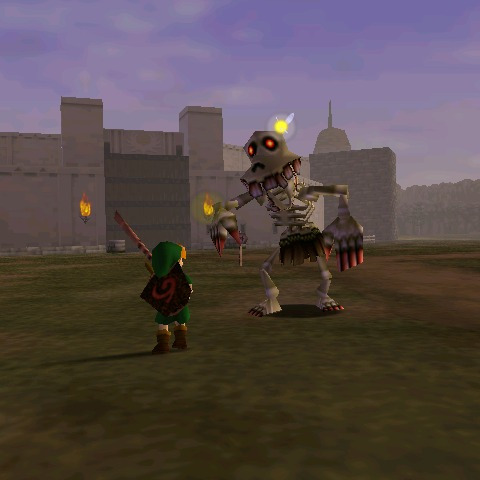
Part One: An Overview of How Fucked Things Are ™
aka The Blood Soaked Hyrule of OoT’s time
Take it as you will, in the Zeldaverse, the colour green has an overwhelming association with undeath.
Sure, sure, life too, I hear you. Farore came down and produced all the living beings that would uphold the law, apparently (specifically not claiming monsters and demons, but that’s another thing). On the surface, that make sense. Forests, lush green fields, prosperity, all of those good things. Green the colour of the most common rupee, green the colour of the Hero’s tunic. Green the colour of magic, and potions that revitalise the body and spirit.
The thing is, revitalising the body and spirit is a flexible idea. To imbue something with new life and vitality can have a lot of implications, especially when you stop talking about the strictly living.
I feel vitality is certainly the best word, not only because of it’s association with life and potency ala the Goddess origin stories, but in the ways that the game uses green itself, such as a measure of both magic and stamina. Green is the colour chosen to represent the unlocked potential within young Heroes.
Vitality specifically refers to a state of being strong and active, and it also refers to the continuance of something to exist. That’s a great thing for plants, or economies, or a potion taken by a young Link who’s swung their sword around or fired off a spell one too many times and feels a little low.
But the dead, though?
As it happens, Hyrule is absolutely littered with human remains, in no small part due to the very recently ended civil wars.
The Civil War, if you need the reminder, is described as a time when the many races of Hyrule were divided and each focused on establishing dominion over the Sacred Realm (because Triforce). I touched on this in my last meta post, but basically, its no holds barred to stop that from happening because if the wrong person gets into the Sacred Realm and makes a wish, it immediately malfunctions.
The criteria for getting into the Sacred Realm and touching the Triforce without royally fucking everything, is basically impossible for anybody not chosen by Hylia.
If you are neither of Hylia’s Bloodline (The Hyrulean Royal Family) or one of her Chosen Avatars (The current incarnation of the Hero), you are not supposed to touch the Triforce. Ever. You WILL be found wanting, it WILL shatter, the Sacred Realm WILL be corrupted by your selfish desires, it WILL unleash and onslaught of mystical influence (reflecting your heart) onto the country.
Now, if it’s Zelda or Link who touches it, that’s fine. Good vibes will pour out. An age of prosperity will ensue. The Sacred Realm is in its default state, a blank and neutral wellspring of magical force.
The game has been rigged from the get go because Hylia still had a job to do. She had to get creative because Demise almost captured the flag, so to speak, leading to the snafu of the Cycle and all that because she cheated at the game, but ultimately Hylia’s task was to guard the Triforce. And that still remains true, for the most part. The Hyrulian Royal Family (and the Shiekah by extension) had to stop at absolutely nothing to win the wars and unify the country, and retain the stasis of the Realm and Triforce, because that’s what their divine orders are.
That’s what they’re supposed to do, ‘the very reason that they’re born’, to lend a quote from King Daphnes. With Hylia on their side by default, they’re willing to do a lot of fucked up things to make sure that happens, ‘for the greater good’.
These dark times are a result of our deeds... -- TP Zelda
In OoT The Sheikah are known as the Shadow Folk. They are heavily associated with death, whether that is caring for the dead’s rest in the graveyard, or working as spies and assassins on behalf of the Royals, or dabbling in various forms of necromancy. Red eyes are an established trait of their people. I will note that, at least from a Japanese point of view, red is often used with the intention of intimidating evil spirits. But it is also a color identified with power and vitality.
So, one could suppose, the Sheikah red eye also symbolises power/control over evil and darkness (spiritually).
That’s a little something that plays nicely with things like the OoT Manga’s explanation of the tear on the eye (and the previous betrayal of the Royal family) and the high probability of a Shiekah faction defaulting during the wars and being banished with other traitors to become the Twili. I know the manga isn’t canon and also SS Impa has a tear, but if you squint, that might be because of her own feelings of personal failure to the Goddess after Hylia’s shedding of her Divinity. You could headcanon that. The existence of the Yiga later in BoTW as a similar happening of division and betrayal lend some more weight to things.
Also, Sheikah who defaulted during the civil war might have even been the ones who actually utilised the Shadow Temple.
Headline: Necromancer ninjas in the process of torturing enough info out of the enemies of the Royal family, who were reportedly seeking the Sacred Realm, decide ‘hey fuck it, let’s take it ourselves’.
That certainly fits into the description of, ‘interloper skilled with dark magic started to appear, seeking dominion of the Sacred Realm’, for me.
Anyway, to the point.
In ostensibly one of the most haunted areas of the game, Kakariko village, we’re treated to the Graveyard and the Royal Family’s Tomb, the Shadow Temple, and the Bottom of the Well. All of these showcase the obvious death and torture that went on, as well as the creepy byproducts of places so saturated with blood, pain, regret, and hatred.

There are skulls in little alcoves on the walls of the catacombs, literally built of bones, who deliver messages to Link. The ones that whisper these messages are all marked by the glowing green eye sockets. Here, the green is used to make the presence of a ghostly sentience inhabiting the skull.
Unsettling. Musty. 4/10 heebie-jeebies.

The Deadhand, giver of childhood trauma that it is, really does its job to hammer home the fact that there has been so many deaths, so much anguish and horror, that those remains can seemingly form into entirely new monstrosities. An amalgamate of undead flesh and nightmare fuel, made up of the body parts of torture victims and the grudges of lingering spirits, seeking to consume the living vitality of whatever comes near-- Link wearing green around the thing might as well be red to a bull.
When defeated in game, it typically drops a small green pot that refuels Link’s magic.
This is a common theme with undead enemies, specifically the ones that are of the zombie flavour. Redeads, Gibdos, Deadhands. All of them generally give up, effectively, distilled magic as a drop item.
Terrifying. Probably smells even worse. 11/10 heebie-jeebies.
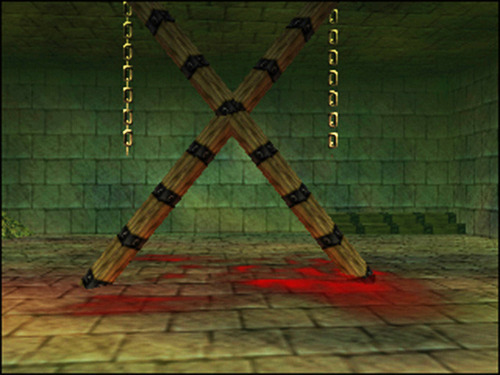
Literal torture device. So many people died here, the room has a green tinge to it. It is soaked in the spiritual imprint of the pain and anguish that took place here. Blood sits here looking freshly spilled, despite the civil war ending many years prior and the Shiekah having ‘died out’, save Impa.
Elsewhere in the temple and under the well, blood splatters are darker red and at least have the decency to pretend to be old. This means one of two things:
Impa still has to make sacrifices to the Seal that contains Bongo Bongo, or feeds people to the undead creatures who lurk down in the dark so they don’t wander up. (Cue the gasp of ‘so that’s why she let the Hylians into Kakariko! Every so often one of them goes missing!’)
Which is a fun dark headcanon to play with, but probably not the case.
Or more likely, the residual spiritual energy that the green haze suggests manifests fresh blood in a manner typical of extreme hauntings. For the victims, their hatred and pain persists so strongly, that their blood seeps up from the cracks no matter how long it has been.
Poltergeist shit. Slip hazard. 8/10 heebie-jeebies.
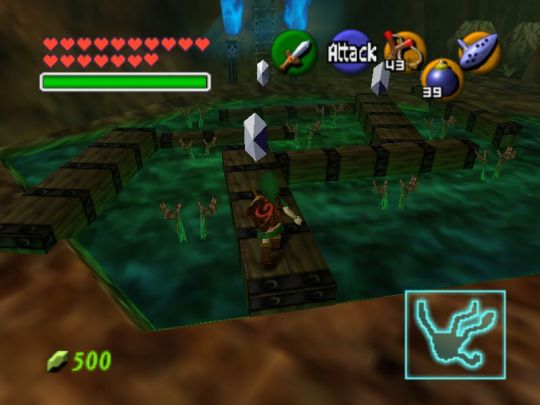
Then there is this. Some people say its just another torture thing, it could have been intended to convey some sort of acid dip. If not torture, maybe bodily disposal. And sure, that’s a reasonable guess.
But it is at the very bottom most cavern of the Well of Three Features, and if it were acid-- for how long the bodies have just been marinating in it-- you can assume nothing would be left of them to stick out. And the fact that all the bodies are neatly spaced, with the arms oddly preserved. They’re presumably like that from lowering bodies in from the wooden beams, the victims may have been tied up with their arms straight upwards.
But, given the Redeads wandering around nearby, I’m pretty sure that’s what this thing does. Make Redeads.
The liquid itself hurts Link, but Link is also alive, and this pool seems to be lacking much of a glow. It’s green, sure, but it’s not exactly teeming with energy. And I think that might be part of its designated purpose-- extracting that green vital energy from living prisoners, draining them until they’re dead. I’m talking juicing people and scooping out the good stuff like the pulp from a really disturbing OJ.
But still steeped in the juice as a corpse, you’re basically pickled in magic brine, so then those gross husks crawl out as Redeads. (Hey, you know what’s handy in wartime? Scaring the shit out of enemy forces by sending some zombies at them. And if they kill them, you’ve lost nothing. If the Sheikah could actually control them? Undead soldiers. Excellent stuff.)
But all the pulpy good stuff is gone, and has been for a while, so most of the bodies in there haven’t pickled in enough magic to reanimate, I suppose.
Human juicer that churns out zombies. Out of juice currently. 6/10 heebie-jeebies.
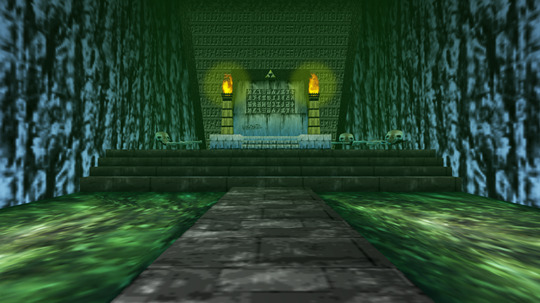
Now, THIS is active zombie juice, if I’ve ever seen it.
This is the Royal Family’s Tomb, by the way. Note the skeletons, picked clean, missing a lot of bones. And that’s a choice they made, because there are also full skeletons around to find.
There are plenty of Redeads down there, for good measure, so I’m going to assume the skeletons are potential graverobbers who were eaten. If Sheikah can presumably command the dead, then the Redeads down there might actually be a counter measure against thieves. If a thief freaks out in the dark when he realises there’s undead down there trying to eat their face, there is also a good likelihood they’ll trip and splash into this green death. A few seconds of exposure is probably enough to kill the average person, and then if their corpse stews for a bit, you have another Redead.
Their living energy revitalises the goop. Their body becomes bolstered security measures. It’s a self sustaining system.
Horrific but effective. 5/10 heebie-jeebies.
Also, there’s a chance that a couple of the skeletons or one or two Redeads down there are the remains of the Composer Brothers. But they will get their own special part in this series, covering Poes in particular.
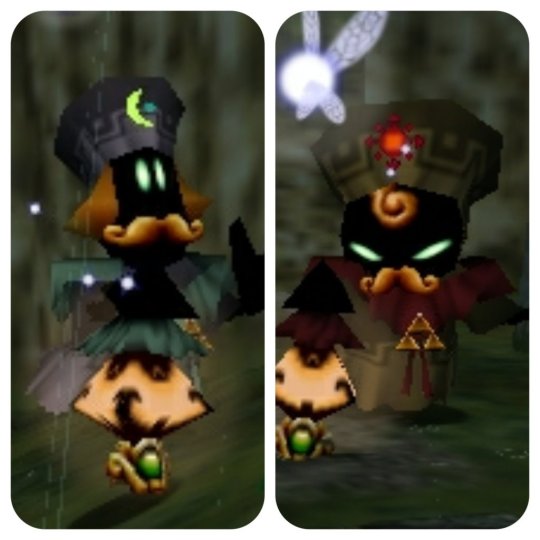
But for the moment, let it be noted: their eyes are also that ghostly green.
Poes are spirits that are unable to move on and who have the unfortunate fate, if left unattended, of turning into phantom monsters who forget their human selves and prey on the living. They tend to pop up the most in two places. One, the Kakariko Graveyard, is obvious and somewhat expected. Dead people, lots of lingering spirits, most of them probably Sheikah and Knights of renown who died in the line of duty. Understandable.
So when you apply the same thought to the fact that Hyrule field is the second most common place to find them, you may as well be concluding that it’s an enormous mass grave of war casualties.
We have established that mass quantities of concentrated death, especially earth that is saturated by the spilled blood of strong soldiers and highly skilled warriors (full of life and magic, as it were), can result in creepy shit made from human remains reanimating over time.
Poes share their haunting of the field with these bumpkins:

These hauntings are not the result of Ganondorf, or the corruption of the Sacred realm. They are not a particular curse placed by anybody.
The Poes and Stalfolk are present in the game from the very beginning, and quite normal fare for Hyrulean life. Lon Lon ranch and castle town are walled off for good reason, and the drawbridge raises at night specifically in response to the literal skeleton monsters who roam around at night.
Stalchildren, specifically, seem akin to the Deadhand in that they are not a direct reanimation of any one particular set of remains. Rather, they seem to be mutated amalgamations of various parts. In the case of the Stalchildren, they rise up under the dark of night, a not-quite-human formation of bone and magic. They seem to possess an aimless drive to attack, perhaps possessed still by the orders of the soldiers who died there.
Interestingly, in a somewhat similar fashion to BotW’s blood moon reanimating the fallen monsters (due to the potency of Malice in the land peaking at those times), Stalchildren only seem to be active under the moonlight. They disintegrate when the sunlight touches them, which promotes the idea that they are the bones of the fallen possessed by the ghostly memory of the war.

They also appear to wear raggy leather kilts, which is a feature they share with the related monster, the Stalfos, who are often acting out the part of a soldier as well. Even better, those bastards are actually WEARING GREEN, to boot, which given the history of Hyrulean Knights prior and their uniforms (SS and Minish cap) is pretty self evident.
Stalfos, however, are also confirmed as humans who have died under certain unique circumstance (such as the magical influences of the Lost Woods) and reanimated as a consequence of what I assume is basically magic poisoning.
It could be a bit like an overdose, succumbing under the intense mystical forces at play within proximity to the Deku Tree (which the strong of spirit can resist). It could be a draining effect, maybe even just a gaseous version of what’s happening when people come into contact with the green goo, except extracted by the forest spirits and plants (also possible that the strong of spirit might resist). That could go either way.
The forest absolutely does eat people’s spiritual energy, though. RIP to Grog and Link’s mother. They’re Stalfos now.
"Anybody who comes into the forest will be lost. Everybody will become a Stalfos. Everybody, Stalfos."
Upon killing both kind of Stal, however, the bones rapidly deteriorate into flames.
You guessed it: green.
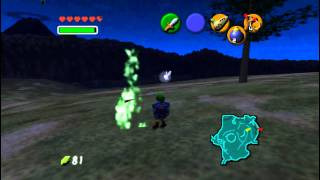
I’ve already pointed out a BoTW reference already, but to add more context back into this thing about the tie between green and things in Hyrule that refuse to die properly:
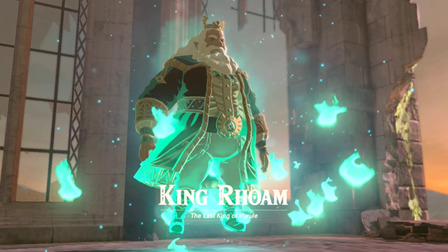
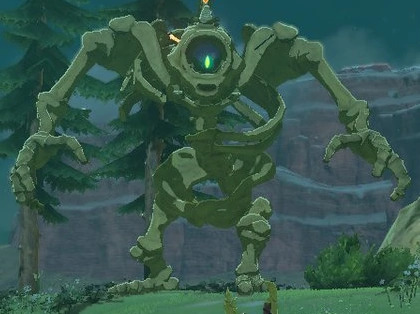
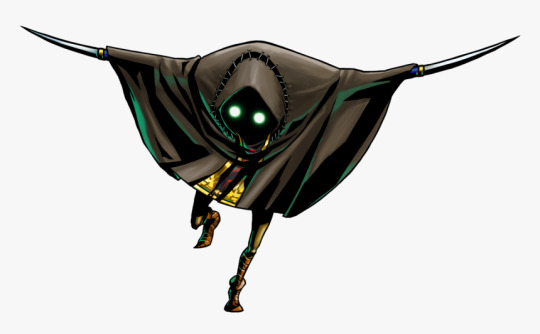

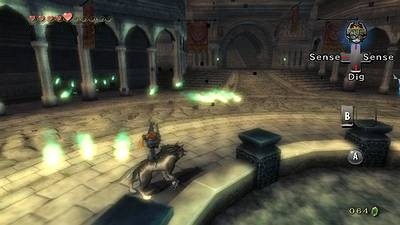

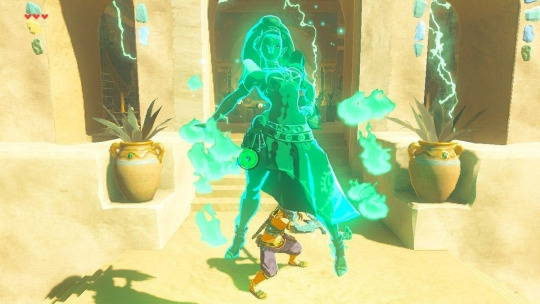
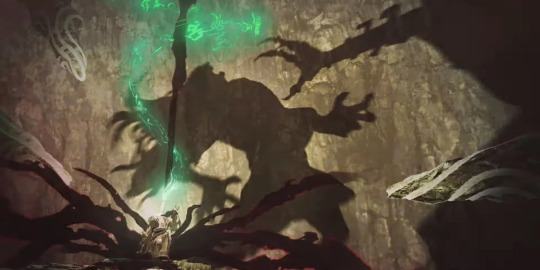

That last one is cheap of me I’m sorry but we’ll get to him too
So we have established that green has an overwhelming association with not only life, but states of undeath.
The overview is, things were already pretty fucked in OoT Era before Ganondorf got the Triforce.
On to part 2!
#tloz#legend of zelda ocarina#Ocarina of time#link#zelda lore#zelda meta#zelda theory#zelda theories#zelda discussion#death tw#blood tw#shadow temple#shiekah#stalfos#poes#undead tw#long post#hero of time#hyrulean history
42 notes
·
View notes
Note
Here’s a pet tax!! This times he’s nuzzling against my arm!
Btw here’s your excuse to talk more about Dice. Or,,,any of Fling Posse! Have fun!

Oh, you enabler, you. Thank you for this opportunity and for the bunny picture.
A collection of thoughts on Dice and why he may very well be the most important character to Ramuda. Put under a cut for some slight TDD spoilers.
Dice’s Personality Traits
Compared to the other two nosy Nancies that make up Fling Posse, Dice himself is the king of minding his own business. While he does display definite interest in his friend’s lives - see asking Riou about his favorite food in the ARB event “Riou’s Kitchen” or discussing Gentarou’s latest story in FP/M chapter 7 - he tends to avoid discussing topics that make others feel uncomfortable.
This can make Dice appear oblivious, but Dice is much more emotionally observant than most characters give him credit for. Let’s take chapter 14 of FP/M for a great example of this. I’ll link it here, and I encourage you to read through it again paying careful attention to his facial expressions.

Dice begins the chapter deep in thought and adopts a solemn facial expression for the next few pages. Something is clearly preoccupying him.

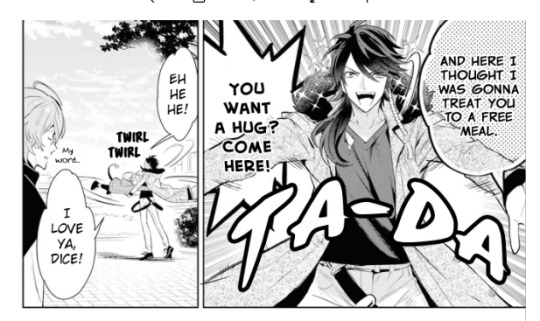
However, the moment Ramuda appears, Dice begins acting much more animated and begins playing along with Ramuda in an attempt to cheer him up. Note that Dice observed Ramuda acting out of sorts for the entire battle in the previous chapters and hasn’t seen Ramuda awake since (according to chapter 15). He’s likely greatly concerned. It is arguable that his reactions are entirely food motivated...

... except for the fact that he returns to his previously somber state the moment Ramuda is no longer looking at him. Dice also doesn’t immediately accept Gentarou’s suggestion that Ramuda is trying to keep up appearances for their sake.
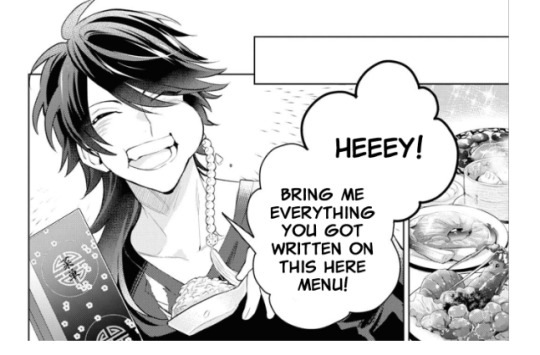
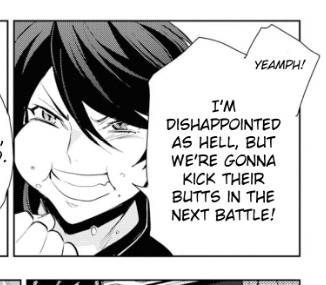
At the restaurant, Dice begins to play up the cheerful glutton again and attempts to directly cheer up Ramuda by operating under the assumption that Ramuda is disappointed by their loss.

When Ramuda goes to leave, the art emphasizes Gentarou’s concern, but the silhouette of Dice (and the lack of any bulging cheeks or cups carried up to his mouth) in the final panel indicates that he has once again returned to his more serious state. In this scene, Dice recognizes that something has gone terribly wrong.
Each member of Fling Posse is a performer putting on an act, and as noted by Ramuda’s reaction to Gentarou invading his privacy, Ramuda feels most comfortable when each actor plays his part. Dice is aware of this and thus acts the cheerful idiot for Ramuda in these scenes because he recognizes that Ramuda needs that stability.
If I may demonstrate another quick example, take a look at the scene from FP/M chapter 12 and compare how Dice acts without (first image) and with a visibly distressed Ramuda (other images) in the room.
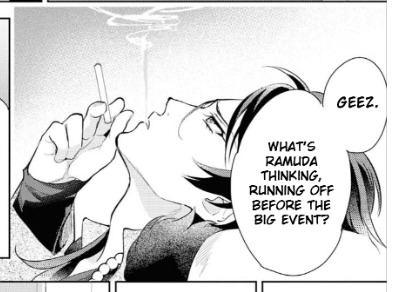
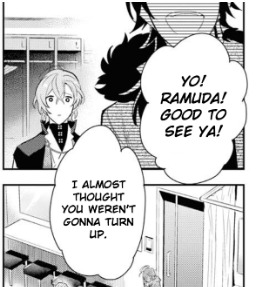


The FP/M mangaka also says (in the afterword of volume 3), “I think [Dice] might have a good poker face and be able to control his facial expressions even when he’s flat out broke. But his posse doesn’t seem to understand that.“ Dice’s poker face is a boon here when he can use it to help the ones he cares about.
For Dice does care very greatly. Dice minds his own business and doesn’t make any overt actions as long as his friends are capable of handling situations on their own. However, the moment he recognizes that they are in over their heads, he takes swift and decisive action (which, in turn, can be harmful to others).

Take this scene in FP/M chapter 10 as a great example. Prior to Gentarou grabbing Hifumi, Dice was firmly a bystander, but he immediately leaps in when the situation escalates. Notice that he removes Hifumi from harm’s way but also serves a shield for Gentarou and focuses his attention on Gentarou’s wellbeing.
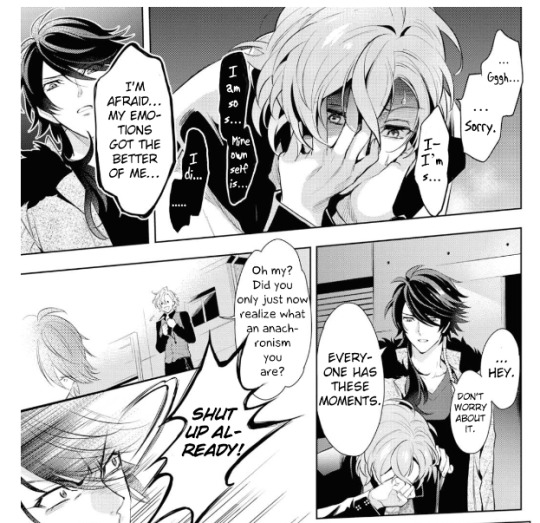
He then offers Gentarou physical reassurance with a hand on the shoulder and an out to the situation, which would have allowed Gentarou to move on as if his mask had never slipped if it were not for Hifumi’s next comment. Dice also shuts down Hifumi before it can escalate any further.

Although Hifumi is attempting to justify himself because he doesn’t understand Gentarou’s reaction and doesn’t see what he did wong, Dice recognizes that this statement also denies Gentarou the right to express his feelings on something which is clearly an enormous deal to him.
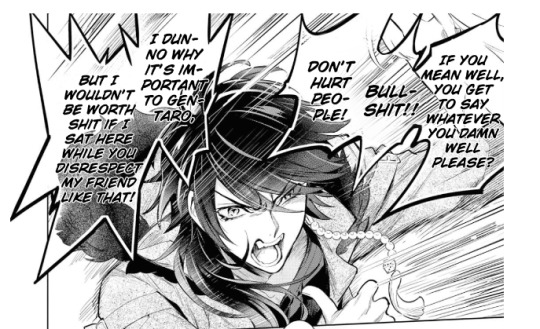
By labeling Hifumi’s comments as “disrespect” and “hurting people” while simultaneously stressing that this topic is “important”, he allows Gentarou the right to feel upset at Hifumi’s comments. He also continues to use defensive posture in order to keep Gentarou physically safe (which must be an intentional choice on the artist’s part, as Hifumi mirrors this pose a few pages later as he begins to defend Doppo). Even though Dice’s reaction crosses the line when he, in turn, begins to hurt someone else, removing Gentarou from the situation, validating his feelings, and making Hifumi stop is exactly what Gentarou needed but was unable to provide for himself.
Dice is a damn good friend and an exceptional person. If you ever find a friend like Dice, don’t let them get away from you.
Saving Ramuda’s Life
Let’s switch gears for a moment to take a look at what goes on in Ramuda’s mind. As a disposable pawn for the Party of Words, Ramuda has an atypical view of the world. He genuinely enjoys the company of others and can form real bonds, but his primary motivation in life is fully self-centered: keep himself alive. Every order he receives comes with the caveat of, “Failure brings death.” The fear of death is enough to drive him to betray his closest friends in TDD, even Jakurai, who clearly means a lot to him.

^ TDD chapter 13. Ramuda receives an order from Ichijiku to handle the Jakurai side of things in the TDD breakup and reflects on the time that Jakurai saw who his true personality and not only accepted it but welcomed it.
Bear with me if you’ve seen me talk about this before, but Ramuda’s ability to feel emotions is considered a fluke. Ichijiku describes it as a “malfunction” and a “nuisance” for his job. She also describes Ramuda himself as a “failure” and “worthless”, sometimes to Ramuda’s face.
Ramuda internalizes this. Notice’s Ramuda’s reactions to slipping up and having an emotional outburst in TDD chapter 9 and FP/M chapter 8.

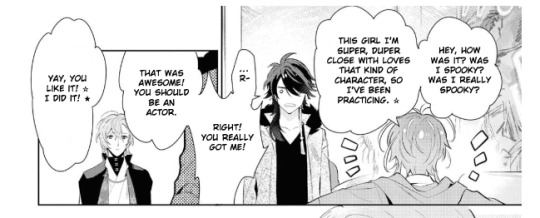
The former of these features Ramuda looking frightened (either due to concern of losing his life for revealing more than he should have done or fear that Jakurai will consider him as “worthless” as everyone else does), insulting himself, and self-harming. While the insults and self-harm are as stereotypically cute as the rest of Ramuda’s facade, the core idea remains that he believes showing his true personality is as idiotic and worth of punishment as everyone else believes. The lack of self-worth is ingrained in him.
The slightly more grown-up Ramuda in FP/M does not react as dramatically, but I really want to draw your attention to the question, “Was I spooky?” It’s worded in a deliberately silly manner because of Ramuda’s speech style, but he is asking his supposed friends if the real version of himself is frightening. Tell me, Dice. Does seeing me scare you? Do you want to run away now before it’s too late? It’s an innocent question on the surface level, but considering the about face his last friend turned after learning more about Ramuda’s real life and job, this question demonstrates that Ramuda’s view of himself has hardly changed for the positive since then.
(Also please observe Dice’s reaction. The pause is him getting into character in order to cheer up Ramuda after a clear emotional upset.)
Therefore Ramuda is a person running entirely on self-preservation but with no sense of self-worth. He sees himself largely the same way Chuuouku does and expects everyone else to do the same. This greatly limits his worldview and prevents him from considering possible other options besides, “Do or die”.
If most of the other cast members found themselves in Ramuda’s shoes, they would have the knowledge and ability to consider other options such as running away, asking for help, or fighting back. Yet Ramuda never considers any of these. He does not have the life experiences the other cast members have to consider making any of these options. He has never observed them or had an outside source present them as options to him. Once the order comes down the pipeline from Ichijiku, it is set in stone. He can hate the order - take a look at another illustration from TDD chapter 13 - but he considers its execution inevitable.
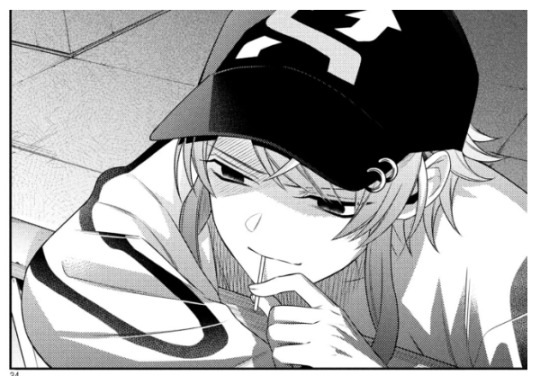
This is why the order to hypnotize Jakurai in FP/M chapter 11 hits him so hard. Now “do or die” has become “die or die”, and his only decision comes down to the nature of his death.

Yes, this situation could have been avoided by talking to Jakurai. Jakurai gives him multiple opportunities to speak up before and during the battle, but Ramuda doesn’t have the ability to recognize those as options for help. In Ramuda’s book, people don’t help him. “Help” doesn’t exist.
In fact, the entire TDD situation could have been avoided as well if Ramuda had trusted his friends, spoken up, and explained the situation. Jakurai (not to mention Ichirou and Samatoki after a fashion) would almost certainly have helped, and that seems to be what Jakurai was waiting for. Once he pushed Ramuda too hard by accident and caused an outburst, he stepped back and waited for Ramuda to come forward on his own terms. But that’s utterly foolish, because Ramuda doesn’t operate on his own terms either. Ramuda doesn’t have his own terms. He lives and thinks the way the Party of Words wants him to think, and if the Party of Words does not want him to speak up and ask for help, then he will never, ever be able to.
The beauty is that Dice is not Jakurai. As mentioned above, Dice minds his own business up until the point a friend of his is over their head, and it’s when Ramuda starts to pull out the True Hypnosis Mic in order to kill himself for Chuuouku that Dice finally acts.


As is the case with Gentarou up above, Dice acknowledges that he doesn’t fully understand the situation but offers physical reassurance, advice, and the implicit argument that Ramuda’s real strength is something of value. Dice writes the word “help” into Ramuda’s dictionary with genuine love and affection.

While Ramuda still can’t consider any option other than “do or die”, it is Dice and Gentarou’s intervention that imbues him with enough self-worth to even consider placing his own wants and needs above Chuuouku’s.
It is this that lays the groundwork for The Loneliness, Tears, and Hope of a Puppet and gives Ramuda the basic agency to even consider acting for himself and, contrarily, acting in line with consideration for other people. It’s this that allows him to avoid ruining Jakurai’s life a second time and this that allows him to accept Gentarou and Dice’s promise of friendship. In the drama track itself, once again it is Dice and Gentarou intervening and challenging Ramuda’s preconceived notions in order to save his life.
Gentarou absolutely plays a vital role in this as well, but it is Dice that chooses to make the first move. Had he not said anything, Ramuda would have used the True Hypnosis Mic and died onstage in front of the audience.
It is sometimes the tiniest of actions and the smallest pieces of support that make all the difference. Sometimes all it takes is someone being unafraid to reach out and flip a die over so it lands on a different number.
262 notes
·
View notes
Photo

Battle of the Worlds
Several times on this blog I've featured movies that have more than one title. In almost every case, the new titles were better than the original one, and this is not an exception. Battle of the Worlds is fairly bland, but it tells you that you're going to be seeing a movie about some kind of space-based conflict, without giving away the details. The Italian title was Il Pianeta degli Uomini Spenti, which is a fucking spoiler.
An earlier draft of this review contained a couple of jokes about the classically phallic 60's spacecraft in the movie, but I went back and took those out. Bezos has really set a whole new standard for Giant Dong Rockets and I can no longer accept anything less.
A group of astronomers have just discovered a rogue planet, which they have dubbed the Outsider, is entering our solar system. Everybody is worried about it hitting Earth except for nasty old misanthrope Professor Benson, who says it'll be a near miss. As it turns out, nobody's exactly right – the Outsider doesn't hit us, but it doesn't just pass by, either. Instead, it settles into orbit, and when humanity attempts to explore it, it responds by sending out squadrons of flying saucers to blow our rockets out of its sky! After one of these crashes on Earth, Benson is able to learn how to deactivate the Outsider’s defences and land on it, where humanity can finally confront its inhabitants... or can we?
Well, if you speak Italian, you already know the answer, because this is The Planet of Extinguished Men. The aliens are all long dead and their spaceship has been following its programming for millions of years without them, including the part telling it to destroy the Earth. Bummer.
I actually have quite a bit to say about this movie. It centres around some interesting musings about human emotion and curiosity, though it never comes to any solid conclusions. As a movie, unfortunately, it's not very well-made. This is a story in which the world as we know it nearly comes to an end more than once, and yet very little seems to happen in it.
The opening sequence is terribly clumsy and does very little to place you within this world. We start off with two characters kissing and being excited about starting a new life together, but we have no idea at this point who they are or why they want to leave this place. When the Outsider is discovered, the scientists beat around the bush and try to keep it a secret, even from the audience. Only Benson is willing to be upfront about it. This does establish him as a realist while making his colleagues seem spineless, which is what the movie wants, but it's also terribly frustrating for the viewer.

Later there's a sequence in which a craft attempting to land on Mars is nearly destroyed by the gravity of the Outsider, and some quick thinking saves the astronauts' lives, but this is directed like the battle sequences in Invasion of the Neptune Men. We have no idea where any of these craft or planets are in relation to one another, and have to rely on characters sitting at desks to tell us what's happening. Even worse, we never see the chaos the looming end of the world wreaks on society. Astronauts who have recently returned to Earth note that they've heard there have been suicides and riots as people fear the Outsider will impact our planet, but we never see any of this.
The movie does a little better later, when the Outsider's close approach causes disastrous tidal forces... these are represented by black and white footage of floods and volcanic eruptions tinted red to try to make it match the rest of the colour film. As always, this fails, but at least they tried. Other special effects are equally pathetic. There are the inevitable plastic model kit rockets with their flame exhaust that rises in what's supposed to be a zero-gravity vacuum. The 'flying saucers' the Outsider launches to defend itself look like nothing so much as giant fried eggs.

The Outsider itself is particularly sad to look at. They have a model they use for it in a few shots, but this is about on a par with the original MST3K spaghetti ball. In other shots, the Outsider is represented by a photograph of the Moon. Absolutely no attempt is made to disguise it, and so of course the effect is a dismal failure because everybody knows what the goddamn Moon looks like. They couldn't even, I don't know, turn it upside-down or something?
On the other hand, the inside of the Outsider is actually pretty cool. The sets aren't exactly believable, but you can see what they were going for. Upon entering the caverns, the explorers find themselves in a series of tunnels full of strange red tubes and textures that look more organic than geological. Entering the Outsider is like wandering around within a living organism. My favourite part of this is that absolutely nothing we see here is comprehensible. Professor Benson, the genius, claims to be able to figure out what's going on, but his declarations seem arbitrary and nothing we're looking at makes visual sense. Even the aliens don't look like anything in particular. Were it not for Benson, we would not recognize them as living (or dead) creatures.

Like First Spaceship on Venus, Battle of the Worlds is much more interested in its ideas than in anything else, including what is supposedly its plot. The characters are important mostly as the embodiment of those ideas, rather than as people in themselves, and the ideas the movie wants to study are about logic and emotion and how they affect human priorities.
The character of Dr. Fred Steele finds himself facing the potential end of the world, and decides that the most important thing to him in this situation is the love between him and his fiancee, Eve Barnett. Professor Benson, on the other hand, thinks the most important thing is to understand the threat they're facing. Partly this is so that humanity can save itself from destruction, but knowledge for its own sake is also important. In between these two men is Eve herself, who thinks love and science are both important and tries to find some middle ground between the two. This is difficult for her, because Benson wants her to stay at the observatory and assist him, while Fred wants her to leave with him so they can get married. When Eve tries to convince Fred to stay with her, both men see this as her having chosen Benson, and it poisons the relationships between all three parties. Only with Benson dead are Eve and Fred able to strike a balance again.
But the movie doesn't want us to think that there is no middle ground. The movie's other romantic couple are the two scientists from the Mars Base, Bob and Cathy. They got married because they were both lonely and a psychological evaluation suggested that they had compatible personalities. As the story progresses, however, they find that they have indeed fallen in love and want a future together that would include things like children – but this is ultimately denied to them, as Cathy is crushed by falling debris while exploring the Outsider.
Benson dies when insists on staying aboard the Outsider to try to decode its computers despite the fact that the military is about to destroy the entire object. As the others escape, Fred intones the movie's beauty killed the beast line: “poor Benson, if they opened his chest they'd find a formula where his heart should be.” And yet Benson died happy – as the Outsider explodes he is triumphant in his ability to understand its secrets, and laughing at the foolishness and cowardice of his fellow man. It is the survivors who are miserable, mourning the loss of Benson himself as well as of Cathy, whose death was entirely meaningless.
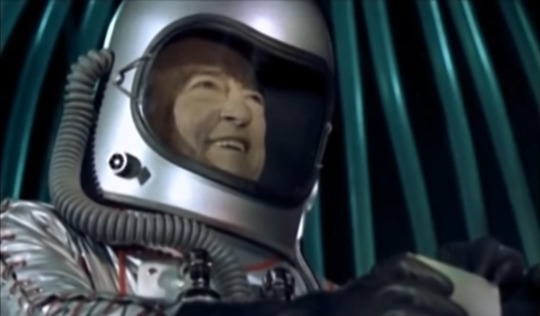
I'm not sure what the movie is trying to tell us about these different approaches to life. It seems to present them as ultimately incompatible, that attempts to give logic and emotion equal weight can only end in tears. Only Benson, who was unswerving in his devotion to science, is ultimately satisfied. Perhaps the take-home message is that whatever your principles are, happiness lies in following them to their conclusion.
There's a second message, too, in different approaches to science itself. Modern physicists will often describe themselves as either theoretical or experimental... the two fields do compliment each other, but they often take place in different rooms, and one will be seen as leading the way for the other. The search for the Higgs Boson was theory-led: people were pretty sure it existed, they just had to find it. A great deal of astrophysics, however, is result-led: what we see tells us that there are things going on, like dark matter and dark energy, that we know nothing about, and the theorists must do their best to figure it out.
For most of his life, Benson has been a theorist. He sits in his greenhouse chalking on the floors, spinning theories out of other people's results or out of pure mathematics. Until the arrival of the Outsider, he had no interest in going out and exploring or experimenting. But it quickly becomes clear to him that he cannot understand the Outsider through pure theory, as his calculations cannot account for the decisions of its makers. In order to know it, he must see it for himself, so he grandly announces his intention to leave his 'den'. Nobody ever asks him if it was worth it, but his maniacal smile at the moment of his death suggests that it was.
Battle of the Worlds had potential to be a really interesting movie, but ultimate the way its shot and edited make it mainly a very dull one. Like its own characters, it fails to find the balance it needed.
17 notes
·
View notes
Text
Haikyuu!! Analysis

Summary:
Haikyuu!! Is a story that follows Hinata Shoyou, a first-year at Karasuno High School, and his journey as a volleyball player for the Karasuno Volleyball team. Karasuno, a once powerhouse school known for volleyball and the legend of ���the Little Giant” has been dubbed as the “fallen crows” as in recent years they have failed to make it to the spring tournament or nationals. Through the series, we see the hardships and many internal struggles of the characters as they develop as players and reach for the top to become the best volleyball players they can be. Haikyuu!! Is based on the many personal philosophies of each individual character and how they perceive achieving greatness in the sport. Misconceptions abound and faulty beliefs sometimes cloud the judgment of the characters as they work to reach nationals and get first place. HQ is a comedy that can be just as heartwarming as it is heartbreaking as it has the ability to make its viewers start cheering for the other team with how well the characters are developed and characterized. We get to follow Hinata and the rest of the Haikyu!! Cast as we see them fail, succeed, and learn every step of the way.
Analysis:
Part I:
Throughout the series, up until the 4th season, there are recurring mentions of “geniuses” and “innate talent” when teams are describing their opponents. A prime example of this would be with Oikawa Tooru, the setter for a powerhouse school in Miyagi called Aoba Johsai. Oikawa struggles with trying to surpass his past underclassman Kageyama Tobio, who is currently the setter for the Karasuno VB team and is known for being a prodigy setter and “the king of the court” due to his tyrannical type authority on the court that got him into trouble at his past school. Oikawa is seen to struggle with a deep-rooted dislike and envy of Kageyama as in their middle school days Kageyama took hold of Oikawa’s position as the team’s first lineup setter. Oikawa’s ambitious and motivated disposition caused him to overwork himself as he strived for perfection to gain a foot ahead of the rising VB genius Kageyama; in the series, it is mentioned by Oikawa that he knows he might never be able to reach the skill level of “geniuses” like Kageyama and Ushijima (Wing-spiker of the Shiratorizawa VB team) but he still puts his all into everything he does so that he can try to reach a fraction of their abilities and get to nationals.
Oikawa’s character brings in a very interesting narrative to the series as from his experiences with volleyball, the audience can gather the essential purpose for Oikawa’s character. Oikawa is ordinary and he is no genius like his toughest rivals and he is aware of his shortcomings as a player and despite all the sweat, blood, and tears he puts into volleyball he may still not ever be able to overcome his most formidable foes.
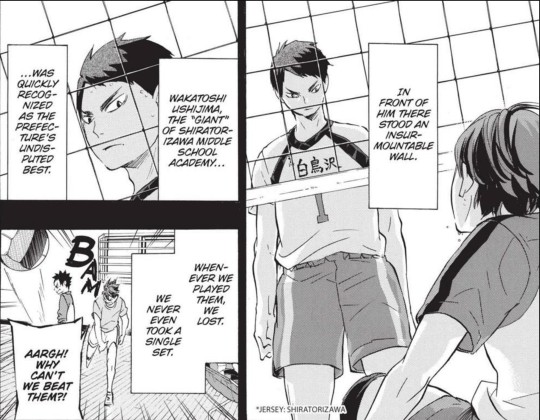

It comes down to a belief that is held among many of the players that even if you put your all into volleyball there are still geniuses and prodigies that will always be able to outperform you no matter what you do because they were born with a talent that very few VB players have and hard work simply isn’t enough in the face of raw, innate talent. But at the end of the day, it is Oikawa’s rivals that have created the monstrous drive to achieve great heights and reach the top and the same can be said for many of the other characters of HQ.
Part II:
In the fourth season of HQ, the entire narrative that the series held up to this point was flipped on its head and another major character philosophy was introduced. During the nationals match of Karasuno v. Inarizaki, an important character is revealed. Kita Shinsuke is the captain of Inarizaki and while he may not particularly stand out amongst the rest of his team, he is an individual whose presence simply demands respect. Kita’s entire existence debunks the narrative of Haikyuu!! That has been based around Oikawa’s experiences with his “monster” rivals Ushijima and Kageyama. In chapter 286 Kita’s infamous monster speech takes place and the viewer’s understanding of HQ dramatically changed.

Kita describes that individuals like Miya Atsumu who are recognized for their immense talent push themselves harder than the average person, and how his hard work and dedication has lead him to his current abilities.

Kita clearly states how people aren’t necessarily talented right from the beginning and these individuals people deem as “monsters” and “geniuses” put so much time and effort into polishing their craft. He even considers it rude since it completely discredits all struggles these so-called “monsters” have put in honing their skills.

Kita’s speech about monsters and geniuses brings to add the perspective that the terms don’t even manage to graze the surface of what goes on behind the scenes of “talented” individuals. He believes that those who view certain goals as unattainable are simply falling victim to a self-fulfilling prophecy as those who give their all to reach their peak through hard work and diligence are the ones who get their efforts rewarded. This isn’t to say that hard work alone will always bring about the desired result but at least you don’t set yourself up for failure by predicting your failure before you’ve even tried. Nobody simply has everything, everyone must overcompensate for what they lack in by polishing the areas they are strongest.

Another concept that Kita brings into the series is his main philosophy on life: “I am built upon the small things I do every day, and the results are no more than a byproduct of that.” this important quote of his emphasizes the idea that the results are only based upon what has been done prior meaning it isn’t even the most important part in the process; if one works hard every day and gives it their all then there should be no doubt that they won’t perform their best.

31 notes
·
View notes
Link
Seattle's largest Hooverville occupied nine acres that are now used to unload container ships west of Qwest Field and the Alaska Viaduct. (Courtesy King County Archives).The failure of Depression-era policies to alleviate unemployment and address the social crisis led to the creation of Hoovervilles, shantytowns that sprang up to house those who had become homeless because of the Great Depression.

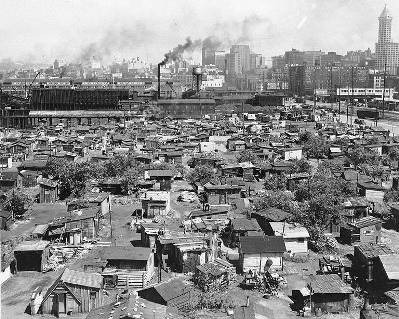
The towns were named “Hoovervilles,” because of President Herbert Hoover’s ineffective relief policies. Mass unemployment was rampant among men aged 18–50, and the lack of a social safety net continued to push them down the ladder. By looking at the Vanguard’s news coverage from 1930–1932 and the history of Hooverville written by its self-proclaimed mayor Jesse Jackson, we can see that the creation of Seattle’s Hooverville was due to an ineffective social system and the inability of local politicians to address the Depression’s social crisis.
Even though these men wanted to care for themselves, the social structure forced them toward charity, a dependent position many unemployed men in Seattle rejected. As a reporter for The Vanguard, the newspaper of Seattle’s unemployed, wrote of one Hooverville resident, “He had a distaste for organized charity-breadlines and flop-houses so he decided to build a shack of his own and be independent.[1]
This rejection of organized charity was due as much to a desire for independence as to the low quality of the shelter and food on offer. While there was shelter for sleeping, it was often on the ground in damp and unhygienic surroundings, and while charities such as the Salvation Army offered soup kitchens, the food was often barely digestible and contained little to no nutritional value. The creation of a Hooverville in Seattle, then, was due to the lack of social safety net, the desire for self-sufficiency, and the poor quality of Depression-era charity.
Jesse Jackson, the self-declared mayor of Hooverville, was one of the men who had a strong distaste for organized charity. After finding men that shared this feeling, they decided to do something about it. In recalling the foundation of their Hooverville, Jackson explained,“We immediately took possession of the nine-acre tract of vacant property of the Seattle Port Commission and proceeded to settle down.[2] Jackson and his friends rounded up whatever they could find and began to create shelters. Seattle city officials were not thrilled about this new development.
In an original attempt to disband these shantytowns and unemployed “jungles”, city officials burned down the entire community, giving the men only seven days’ eviction notice. As The Vanguard argued, this only made the social crisis worse: “If the County Health officer orders the Jungles burned out this year, as he did last year, a large number of men will be thrown upon organized charity, for no very good reason.[3] Hooverville residents, for their part, were not thwarted by the city’s attempt to disband them. They simply dug deeper embankments for their homes and reestablished the community. Noted The Vanguard, “Meanwhile, new shacks go up everyday, and more and more buildings uptown are empty.[4]
In June of 1932 a new administration was elected in Seattle. They decided that the Hooverville would be tolerated until conditions improved. However, they did demand that Hooverville’s men follow a set of rules and elect a commission to enforce these rules in conversation with city officials. Among the city’s new rules was one outlawing women and children from living there, a rule almost always abided by. This agreement between Seattle and its Hooverville improved relations between the two greatly. Businesses that were originally hesitant become friendlier, donating any extra food or building supplies to Hooverville’s residents.
The Vanguard drew vivid pictures of the atmosphere of Seattle’s shantytown: “Little groups of men huddled around forlorn fires, ‘boiling-up’ clothes begrimed by their peculiar mode of travel, or cooking food-the worst kind of food… out of smoke-blackened cans these men eat and drink.[5] While the surroundings were not optimal, Hooverville mayor Jesse Jackson;s more personal portrayal of Hooverville pointed out the resilient nature of residents: “…for the most part they are chin up individuals, travelling through life for the minute steerage.[6] Either way, Hooverville was growing: very quickly after its original settlement, Jackson noted that Hooverville “…grew to a shanty city of six hundred shacks and one thousand inhabitants.[7]
Jackson referred to Hooverville as “…the abode of the forgotten man[8] His characterization was correct in regards to the men who lived in other jungles or shanty communities around Washington, but not accurate of Seattle’s Hooverville. One Vanguard journalist noted that “Perhaps if some of these Jungles were as conspicuous as Hooverville, the problem of unemployment would be recognized to be really serious by those sheltered dwellers on the hilltops who live in another world.[9]
The men in the average city jungles were in fact forgotten men. Hooverville, however, was a jungle with power. Wrote sociologist Donald Francis Roy, who lived in the Hooverville as part of his research, “Within the city, and of the city, it functions as a segregated residential area of distinct physical structure, population composition, and social behavior.[10] Residents were not only to gain community involvement but also a place in the Seattle city board of commissioners. Hooverville was becoming a city of its own.
A different Hooverville near 8th Ave S. in 1933 (Courtesy University of Washington Library Digital Collection)

Despite its growing influence in the city, Hooverville was by no means a secure place to live, but a temporary and improvised shantytown. With a backdrop of skyscrapers that boasted of Seattle’s economic might, Hooverville, on the edge of the waterfront, was situated in a location where it stood out completely.
One town member commented on how “The sea appears to be eternally licking its chops in anticipation of swallowing the entire community in one juicy gulp[11] While Hooverville’s small shacks seemed to suffice for the time being, they were not sturdy homes. Some were lucky enough to contain solid walls built of wood with separate bedrooms inside, while others barely had a wall and ceiling built from flimsy boards. One journalist described Hooverville simply and accurately as “…approximately one thousand shacks, inhabited by about fifteen hundred men, who have discovered how to exist without money.[12]
The shantytown consisted of almost all men, aged 18–60, with little to no income. Considering that the majority of Hooverville’s population was older men in their 40s, 50s, and 60s, many historians have been shocked that there weren’t higher death rates. Some observers of the community claimed that the shanty lifestyle provided a stability that actually improved some of the men’s health.
The only variable among these men was race, which was reflected in Hooverville’s elected board of commissioners. As Jackson wrote, “The melting pot of races and nations we had here called for a commission of several races and nations. Two whites, two negroes, and two Filipinos were selected.[13] As noted before, the Seattle city commissioners did not allow women or children to live in the community. While some floated in and out, they were rarely permanent fixtures.
The spirit of these men was their most notable characteristic. Jackson declared that “If President Hoover could walk through the little shanty addition to Seattle bearing his name, he would find that it is not inhabited by a bunch of ne’er do wells, but by one thousand men who are bending every effort to beat back and regain the place in our social system that once was theirs.[14]
Jackson’s goal was to point out that these men were not lazy, but simple, average, hardworking men who had been failed by the social system. While these men created a community together, Jackson felt that a community sensibility was not the only one in the town: “I would say it is more of an individualistic life, but we do divide up a lot around here, but it is more a settlement of rugged individualist.[15] One of the traditions of Hooverville was for residents who found a job (a rare event), to ceremoniously give their house, bed, and stove to others still out of work. While the men of the community clearly were used to living their lives independent of others, they still found a way to help those struggling around them.
The political structure of Hooverville was based largely around the self-declared mayor Jesse Jackson. While the city did demand that the town create a commission of representatives, Jackson was still looked upon as the voice of Hooverville. Jackson claimed that “mayor” was never a role he sought out, but rather fell into: “I am just a simple person, whose status in life is the same as theirs, trying to do the best I know how to administer in my poor way to their wants.[16]
The only benefit he received for being the leader of this shantytown was a donated radio from a Seattle company, which he made available to the men by hosting news and entertainment listenings in his shack. While the community seemed to have a substantial political structure, individually Jackson noted that the situation was different. “My honest opinion is that the average working man doesn’t know what he wants in a political way.[17]
The community’s naïve opinion toward politics might have been the reason why it was so easy for them to look to Jackson to lead of the community. While there were no laws established within Hooverville, there were common rules enforced. Jackson pointed out one example. “You can’t come here and do just what you want. You can’t live alone. You have to respect your neighbor, and your neighbor must respect you.[18] He noted that troublemakers were not thrown out by the men within Hooverville but by outside authorities.
The men in Hooverville did far more to help themselves than any established social and political structures did during the onset of the Depression., but their collective action was often not enough. One Seattle journalist still put it most bleakly by describing the men of Hooverville’s future as “… blacker than the soot on the cans [they eat out of],” while politicians quibbled … “about the exact number of unemployed but do nothing to relieve distress.[19]
Lee took this photo June 10, 1937. Close to 1,000 men lived in Seattle's Hooverville. (Courtesy University of Washington Library Digital Collection).

Many politicians looked away at other, more “important” issues, but it was still noted that there was a crisis of housing taking place. Reported The Vanguard, “According to the report of the Central Housing Committee of the U[nemployed] C[itizens’] L[eague] to the central federation the unemployed are expected to be content with shacks, rookeries hovels in brief, a pig-pen standard of housing.[20]
Politicians, in some cases, did far more harm then good. For instance, after ordering the burning of Hooverville, Mayor Dole of Seattle proceeded to evict more people out of their homes. He suggested that they obtain temporary, low-quality housing, then move quickly into permanent housing again. Articles in the Vanguard asked, “Just where they were going to find permanent dwellings, when they had no money to pay rent in their previous homes, was not explained.[21]
This plan was clearly flawed and poorly thought out: “…he was going to see to it that property was protected. Human rights apparently came second.[22] Mayor Dole claimed he was just upholding the rule of law. However, in a time of economic depression, with hundreds of thousands of American’s struggling to make ends meet, what is the duty of the law? It was established the protect individuals, not persecute them when they are down and out. “All these men ask is a job, and until that job is forthcoming, to be left alone.”[23]
Lessons from Hooverville still have not been learned today. Seattle, in 2009, is currently facing a recession that may be the most serious since the Depression of the 1930s, and a community similar to Hooverville has formed. The current “Nickelsville” is a nod to Seattle Mayor Greg Nickels, just as “Hooverville” was a sarcastic nod to President Hoover’s inaction. Additionally, the mission statement on Nickelsville’s website is eerily reminiscent of the Jackson’s description of Hooverville’s founding: “
Nickelsville will keep operating due to the inescapable fact that there are people on the streets with nowhere better to go. They are taking the initiative to organize so they can provide for themselves a basic level of safety and sanitation when their government steadfastly refuses to do so for them.[24] Sinan Demirel, executive director of the local Seattle shelter R-O-O-T-S, which has supported Nickelsville, referenced the history of tent cities in an interview, saying,
“Like the Tent Cities that preceded it, Nickelsville is part of a long and proud tradition of homeless persons organizing themselves to provide each other safety and to educate the broader community about their plight.[25] The leaders of Nickelsville urge its members, as well as the members of the community, to encourage government action to fight homelessness.
If members of the Seattle community do not take action, they might experience a modern-day Hooverville. Demirel noted that, “If it is successful during its next move [in June 2009] in establishing a permanent site and permanent structures, then Nickelsville will join an even prouder tradition, dating back to Seattle’s Hooverville over three quarters of a century ago.[26] If Seattle does not learn from the example set by Hooverville in the 1930s—that the failure of the social and political system, not individuals, leads to homelessness—it is doomed to allow history to repeat itself.
27 notes
·
View notes
Note
Any suggestions for writing dialogues? I mean, when it comes to punctuations and actions the characters perform.
Okay, this ask has been in my inbox for months at this point, and I've been saving it because 1) I wanted to write something meaningful and 2) I didn't know what I could write that hasn't already been said ad nauseam by other writers. I still don't know if anything I say will be particularly groundbreaking, but I'll try to be helpful. Keep in mind, I'm a young writer, myself. I'm still learning new things every day, and I'm far from a guru in the field.
This got long, so I’m going to put it under the cut:
The first thing I did was ask my mother this question, because I was interested in hearing her answer. She doesn't write fiction, herself, but she has been in the editing game for 30 some-odd years. She edits fiction for Harper Collins Publishing and has an eye for these things. However, her answer to this was very plain and simple.
She said, "All editing and punctuation exists to serve one key purpose: to not confuse the reader."
As far as grammar goes, that's the main goal. I was looking for something a little more hard and fast--some sort of rule in a style guide--and y'know, I'm sure there is a rule out there. But in a fairly fluid world of fiction writing and "rules are meant to be broken" mentalities, the most important thing to heed is the comprehension of your reader. As soon as you’ve confused your reader, you’ve made a mistake. Not a failure--but a mistake that needs to be fixed. I’ve made them; I’ve fixed them. Dialogue can be a particularly tricky area, because it’s like a minefield for these mistakes.
I’ll add an example of my dialogue and break it down a little bit:
‘“Soldier?’ Red said, interrupting the beginning of another gushing tirade.
Larb's grin faded a bit around the edges as he glanced up. ‘…Yes?’
‘Just remember: you're walking a very thin line.’
His eyes dropped back down to the controls. ‘Yes, my Tallest… It won't happen again.’”
First and foremost, it should be clear who is speaking. I help this along by making sure the characters’ actions are in the same paragraph as their speech. It keeps it more comprehensive. Otherwise, it would read like this:
‘“Soldier?’ Red said, interrupting the beginning of another gushing tirade.
Larb's grin faded a bit around the edges as he glanced up.
‘…Yes?’
‘Just remember: you're walking a very thin line.’
His eyes dropped back down to the controls.
‘Yes, my Tallest… It won't happen again.’”
Not completely indecipherable, but distracting enough to make the reader re-read it a few times. As far as formatting goes, it’s also not very pretty. Now, I’m not perfect with this. In fact, I still need to go through Parade and reformat some sections that might read like the above. However, it is a readability rule that I’m trying to follow more closely.
Another difficulty with ensuring you’re making it clear who’s speaking can be the use of pronouns. I’ll be the first to admit, writing with multiple characters who all use the same pronouns can be incredibly difficult. You can’t always just use “he said” as a tag. It’s too easy to hit a snag where the reader gets confused and doesn’t know who “he” is.
‘“Soldier?’ he said, interrupting the beginning of another gushing tirade.
His grin faded a bit around the edges as he glanced up. ‘…Yes?’
‘Just remember: you're walking a very thin line.’
His eyes dropped back down to the controls. ‘Yes, my Tallest… It won't happen again.’”
Sure, maybe this short passage isn’t so bad; It’s still fairly clear who’s speaking. But imagine if the entire book was that way: three, maybe four characters in the same room who all use he/his pronouns speaking without any further identification. It would get confusing and distracting. Lots of reading passages over again to try to decipher who is saying what and lots of frustration on the reader’s part. At the same time, always using the characters’ names can be tedious and unnecessary. Finding a good balance isn’t always easy, but it is worth it.
The golden rule, for me, is exactly as my mother said: “Do not confuse the reader.”
Below, I’ll add some additional dialogue tips I have picked up:
Constantly adding a tag can get tedious.
‘“Soldier?’ Red interrupted, cutting off the beginning of another gushing tirade.
Larb's grin faded a bit around the edges as he glanced up. ‘…Yes?’ he inquired.
‘Just remember: you're walking a very thin line,” Red replied.
His eyes dropped back down to the controls. ‘Yes, my Tallest… It won't happen again,’” he muttered.
Sure, this makes sense. It’s clear who’s speaking. But it also doesn’t read as smoothly. Not to mention, the overabundance of different transitive verbs (interrupted, inquired, muttered), is stilted and almost mechanical in how the dialogue reads. Oftentimes, “said” is perfectly fine. Fun words like “muttered” and “interrupted” are great, too, but in moderation. Finding a happy medium can make all the difference.
Sometimes, a tag isn’t necessary at all.
This segues into my next piece of advice: it’s important to write dialogue in a way that still allows the reader to use their imagination. This is where I’ll go off on a bit of a rabbit trail, because this is something I’ve had to learn for myself recently.
Put trust in your reader to make up their own mind on how dialogue is spoken
I recently finished reading On Writing: A Memoir of the Craft by Stephen King (which, regardless of your opinions on King, was a very helpful book. I enjoyed it a lot). In one passage, he tells the reader to imagine an orange sitting on a table. Just that. He doesn’t give any further details. There is a 100% chance that we are all going to see something different in our minds. We are going to imagine a different table, a different room, and maybe even a different orange.
Sometime, description helps. Sometimes, a carefully placed lack of description lets the reader make up their own mind and encourages imagination. This advice has served me well in writing dialogue. I know it’s a tired old saying in any writer’s workshop: “never use adverbs in dialogue!” And to be honest, I still believe there can be a time and a place. But relying heavily on adverbs doesn’t do anything for the reader, except maybe shoehorn them into a state where they have to re-read dialogue with the new inflection.
‘“Soldier?’ Red said solemnly, interrupting the beginning of another gushing tirade.
Larb's grin faded a bit around the edges as he glanced up. ‘…Yes?’ he asked weakly.
‘Just remember: you're walking a very thin line,” he replied sternly, in a flat monotone.
His eyes dropped back down to the controls. ‘Yes, my Tallest… It won't happen again,’ he said lowly, almost inaudibly.
Again, this feels stilted, and doesn’t really leave anything to the imagination.
To better emphasize what I mean by this, I want to use a real example of it in action. (I hope you don’t mind, @sunnymelonpan!) Shortly after I read this advice and starting cutting down on over-describing dialogue and using adverbs, I wrote some IZ sickfic prompts. A friend of mine decided to draw up a comic based on one of them. This was not only incredibly flattering, but unexpectedly enlightening. I was able to see firsthand how other readers interpreted my dialogue. And lemme tell you, it wasn’t always exactly how I had envisioned it.
Here’s some dialogue I wrote for the prompt in question:
“Dib swiped the thermometer from him and pushed his glasses up his nose while he read it. ‘That’s because it isn’t going down. Huh.’
‘S-some help y-y-you are,’ Zim sneered.
‘Hey, give me a break. I’m doing my best. This isn’t exactly how I wanted to spend my weekend.’
Dib’s outline rose to its full height in Zim’s dimmed living room. He disappeared into the kitchen with the thermometer, then returned with something else in his hands. Without any warning, he placed it onto Zim’s forehead, scowling at the death glare he received in return.”
When I wrote this, I personally imagined Dib acting and speaking in a sort of annoyed, deflated way. Like he wasn’t really taking Zim’s harsh words seriously. Just a sort of eye-roll “yeah, whatever, Zim,” demeanor. That’s how I saw it.
This is how Sunny saw it:


In Sunny’s comic, Dib is genuinely angry. He gets annoyed, stands up, and actually berates Zim with these words.
I never made it clear how Dib spoke this line. Some people might look at this and say I failed as a writer because I didn’t explicitly say that Dib’s line was more casual than angry. I disagree. I left it up to the reader to interpret it as they chose. And Sunny surprised me by interpreting it in a way that was different. Not wrong! Just different. I positively loved seeing Sunny’s interpretation of my prompt. It let me see my writing in the eyes of others; it showed me that I was able to describe scenes while still allowing my readers to use their imaginations.
As a fiction writer, it is not my job to be a stagehand and tell the reader every minute detail of the scene I’m writing. Instead, it is my job to guide them through the story and allow them to envision parts of the story as they see fit. This is especially true with dialogue.
So let’s go back to the original excerpt from Parade that I was using as an example:
‘“Soldier?’ Red said, interrupting the beginning of another gushing tirade.
Larb's grin faded a bit around the edges as he glanced up. ‘…Yes?’
‘Just remember: you're walking a very thin line.’
His eyes dropped back down to the controls. ‘Yes, my Tallest… It won't happen again.’”
In this passage, I tried to apply all these rules:
Make it clear who’s speaking.
Use tags sparingly. Sometimes, “said” works just fine.
Use adverbs sparingly and don’t fall over yourself trying to describe everything.
The dialogue flows smoothly, it is clear who is speaking, and the reader can decide how it’s being spoken. Is Red angry? Impatient? Completely void of emotion in his words? Is Larb scared out of his wits? Trying to keep up a facade of bravery? Who knows! I sure don’t! I’m just the writer! It’s up to YOU to decide.
So... yeah! I know my advice wasn’t particularly groundbreaking, but I hope it was an interesting read, nonetheless.
#writing advice#rissy's asks#rissy rambles#ladyanaconda#keep in mind#i am not a professional writer#i have my degree in communication not english#i just write a lot and have the help of some professionals in my life#i also still have a lot to learn#so i am in no way some sort of sacred fountain of wisdom#sorry if i have some grammar errors too#i know that must make me look like a hypocrite#i'll try to go through later and fix as many as i can catch#this was kind of a 'stream of consciousness' post
9 notes
·
View notes
Note
What was the honest reaction to Sonic 06 back in 2006?
It was a long time ago, so I can only really speak to my own perspective.
Sonic 2006 was the time that Sega’s marketing department really started cranking the hype train really, really hard. Sonic 2006 was announced as a fresh start. A soft reboot. Sonic Team said they were treating it like “the first Sonic game on the Sega Genesis.” You still had Tails, and Knuckles, and Shadow, but it was the start of a new era. A new type of Sonic the Hedgehog. More serious, more realistic, more “epic.”
At this point, there was no reason to necessarily distrust any of that. Yes, Sonic games had been slipping in quality, and yes, Sega was still more or less pretending that everything was “okay.” But that was always in the typical, “we’re trying to sell a video game and not go bankrupt” sense. This felt like a tacit acknowledgement that things weren’t so great and they were going to start over and refocus. Set things right.

Early gameplay footage looked rough. I distinctly remember a Gametrailers hands-on where they were demoing the Mach Speed Zone in Kingdom Valley, and the Sega representative was very clear and upfront that the game wasn’t done yet, and all of the empty space Sonic was running through would be filled in later. (It wasn’t.) There was also the typical debate over the TGS 2006 “Bringing it Home” playable demo, where people argued then, too, that the game wasn’t done yet, and not to judge things too harshly. The final version will be better.
The final version also wasn’t done yet. So, y’know.
I had effectively bought an Xbox 360 for this game. I was broke as per usual, but I’d gotten lucky and won a Gametrailers video competition, which landed me $1000 in Gamestop gift cards. I bought a PS2, a Nintendo DS, and an Xbox 360, plus more than a dozen games between the three platforms. I knew there would be more Xbox 360 games besides Sonic 2006, and I’d even originally wanted a 360 primarily for Elder Scrolls Oblivion, but the simple fact is that once the money was in my hands and I spent it, Sonic 2006 was the only actual Xbox 360 game I owned.
Or was going to own, anyway. I think I’d won the contest in September or October of 2006, when Sonic came out in November. So I bought the 360 a few weeks early with some original Xbox games, and spent the interim with Spider-man 2, Ninja Gaiden Black, and the copy of Halo 2 I borrowed from my cousin.
Sonic 2006 was the first game I’d ever pre-ordered. The second game, pre-ordered on the same day, was The Legend of Zelda: Twilight Princess for the Gamecube. I still have the tiny pre-order statue that came with Sonic. His gloves and socks, once white, have begun to yellow with age, and the skin tone on his face and body is turning an ashy gray.

Even 72 hours before launch, there was not a clear picture what Sonic 2006 actually was. Sega was deliberately obfuscating certain features; early in development they’d sworn up and down that there were only three playable characters in the game, something that blatantly wasn’t true. Perhaps it was miscommunication from Japan, but it meant they were now going out of their way to hide how many other playable characters were actually in the game. I naively distrusted most (if not all) professional reviewers back then, and the earliest scores for Sonic 2006 were all over the map.
As a Sonic fan, you kind of had to know how to read between the lines on the more negative reviews, because we were definitely in the era where it felt like critics were starting to dogpile on the Sonic franchise now that Sega was a third party developer. There weren’t a lot of professional reviews you could trust regarding Sonic games, or at least, that’s what it felt like. This was the rise of the podcast, and snarky hosts were taking whatever low hanging fruit they could get.
I remember waking up on launch day -- friends had gotten up early and picked theirs up in the morning, when I’d rolled out of bed somewhere closer to noon (or maybe even afternoon). I had plans to pick up my copy later that evening, after sunset. My friends did not sound happy, but again, there was always this vibe of “Wait and see.” They had only just started the game. First impressions were still too fresh to really call.
But I had this moment, this cold spot in the pit of my stomach, where I thought “Maybe I can cancel the pre-order and get Gears of War instead?” Reviews for Gears seemed pretty good. I’d probably be happy with it instead of Sonic.
I couldn’t let myself do that. I was a Sonic fan. This was the first big Sonic game of a new generation. A new start. I bought the console for this. First game I ever pre-ordered. The second Sonic game in the history of the franchise I’d bought on launch day. This was it. This was the event. No backing down. Besides, Sonic 2006 was a big 15th Anniversary celebration game. They wouldn’t make such a big deal about the anniversary without just cause, right? Sonic 2006 was going to be great. I just needed to calm down.

So we drove out to Gamestop -- and it was the sort of thing where I think we couldn’t do the pre-order at my local Gamestop for some reason, so this one was a town or two over. It was a journey. I was nervous the whole way there. Something told me I was making a mistake. But I had to do this.
I think it may have been starting to rain as we rolled up on the store. It was around 8pm, and people were starting to camp out on the sidewalk. Literally camp out, tents and all, because of the rain. Today was the launch date for Sonic 2006, but tomorrow was the launch of the Playstation 3. These guys were here for Gamestop’s “Midnight Madness” launch event. They were going to be some of the first to get a PS3. I was probably the last person to pick up a Sonic 2006 pre-order.
Sonic 2006 might have been the first Sonic game to ever make me angry. I’d had a lot of internet debates on how I felt about Sonic Adventure 2, but most of those amounted to splitting hairs about things that felt disappointing when compared to the original Sonic Adventure. I was not angry then, I was simply let down. I was similarly let down when I finally got a chance to play Sonic Heroes. But again, not angry. Baffled, maybe. A little sad. But not angry.
With Sonic 2006, I slammed head first in to all of my excitement and uncertainty at 200mph. This was a Sonic game unlike anything I’d ever played before, and in all of the worst possible ways. Enough has been said about the quality of the game that I don’t need to describe anything that’s wrong with it -- also because literally everything was wrong with it. Perhaps the first video game I’d ever played, ever, on any platform, that actually fought back against your efforts to play it. A disaster in every sense of the word. A broken nightmare. After finishing Sonic’s story, I was mad. How could they let this happen? What was wrong with them?

I was less angry after having finished Shadow’s story. Shadow had even buggier gameplay than Sonic, but it also felt more complex, more action-oriented. His story was better, too -- instead of the sappy Princess love story, Shadow’s story was about how the world was against him, and the crossroads that brought him to: rise above his past and strive to be a better person, or give in to the temptations of evil? It was still dumb as heck, but it was less dumb than Sonic’s story.
By the time the credits rolled, I had accepted the fact that this game was a mess. More of a mess than any Sonic game ever had been before. It was clearly a deeply unfinished game. Friends theorized maybe they could patch the game, because that was a thing games could get now. Sonic 2006 could still be saved. The PS3 version wouldn’t be out for another month, surely that means they’re working on a fix, right? Some were even theorizing over an achievement called “Nights of Kronos” -- it mentioned a “complete ending to the last hidden story.” Perhaps that meant there was going to be more? Maybe we got the bad ending, and a better, more finished ending was waiting for us on the disc somewhere?
There wasn’t. And no patch ever fixed the game. That was Sonic 2006 -- the kiss, the loading screens, the strange mannequin NPCs, the stiff controls, the glitchy physics, the empty overworlds, the bizarre dialog, the plotholes and time paradoxes, that’s just what the game was, and was always going to be, forever.
Before Sonic 2006, you could say that 3D Sonic games were bad, but there was always a place to defend them from. They had problems, but they were never irredeemable. Sonic Heroes may have had frustrating controls and repetitive level design, but it had great art direction, nice music, and fun concepts. They were always trying, dang it, and it was obvious to see that.
Sonic 2006 felt irredeemable. Offensively terrible. A failure on such a level that it was hard to comprehend. Beyond simply “a new low” for the franchise. This felt like rock bottom. It was the kind of bad that spread like a virus. Even good games, like Sonic 2 on the Sega Genesis, felt notably tarnished by the existence of Sonic 2006. It threatened to ruin the entire franchise by proximity alone. For some, it probably did. I definitely had a moment where I wondered if I would ever enjoy a Sonic game in the same way ever again. They were all tainted now. Infected by memories of Sonic 2006, the game that was supposed to save the franchise, but condemned it to the lowest pits of hell.
In isolation, that might have been the end for me. I might have continued to drift away, bit by bit, until I found greener hills outside of the Sonic franchise.
I’ve said this before, but what saved me was getting hired to write for TSSZ News. Now, suddenly, I was paid to play and write about Sonic games. It was a duty. And it helped that the first Sonic game I reviewed for TSSZ ended up being Sonic Unleashed, a game I continue to openly gush about to this day, more than a decade after its release.
But never forget that Sonic 2006 was such a disaster that it nearly made me give up Sonic the Hedgehog. It really was that bad.
33 notes
·
View notes
Note
RZK: "90% of the time great music is created on drugs" - I do not like the sound of that. I think he would create good music without drugs just as fine. Its not greatness of the music, but his perception about what he thinks sounds ready. And when you are high a lot is more tolerable, even the previously soberly shitty music :) Please, i need your take on this.
Ah god. Difficult topic.
This ... might get longer?
There is a difference, I think, between writing on drugs, and then listening back to it on drugs. I think assuming that someone would preceive the outcome differently/as better on drugs than off them is tiny bit presumptuous. Not because it’s not possible, but because different drugs work differently, depending on who takes them and in what headspace. Acid for exemple is an entirely different beast than cocaine is, and both will work differently depending on how you feel when you take them to begin with.
Now going off that quote that I like so much; the drugs only helped me to get going, I have a feeling for him personally it’s not so much about the creative process itself but about energy levels. There is something about having more ideas than energy that is horribly restrictive and frustrating and that at least in my experience can even really block you because then you don’t know where to start. Add to that a fear of failure, that just gets perpetuated by not knowing where to start and you’re stuck, and it’s paralyzing. Coke or heroine in that circumstance are honestly only a logical temptation, because they boost self esteem and mental energy, and they don’t feel like you’re a different person. Why do you think so many students take Ritalin to get through studying for exams. For someone without ADHD Ritalin can almost be cocaine light, and it doesn’t feel like it does that much to your personality other than getting your brain to a place where it does what you ask of it. I don’t know if this is me reading into too little data, but I feel like all the people I know of that got into coke or heroine too much were the kind of hyper creative, high output people that Richard is like too. I think of Nikki Sixx especially, and the way he is described almost the same way, especially during his low points: overbearingly creative, controlling in the studio, hyper obsessive about his visions.
Then you have this huge amount of 70s psychedelic rock music written on acid, which is a completely different beast. I have zero personal experience with hallucinogens because they scare the shit out of me, but there is enough literature and science out there that basically proves that they change your perception of the world in general, make you feel more connected, and actually do help people understanding themselves and are a catalyst for discovery. I mean, alot of psychedelic and prog rock is pretty out there. There is something to be said about “would they have really dared to do all that without the drugs?” Think about all the self inflicted judgement and restrictions and rules we all carry around since childhood for psychology reasons - and then think of something that helps you switch off those controls and just “be”. You could argue alot of musical development would have never happened without the drugs. And if it did, it would have been made by artists with great self esteem, maybe.
Now, I don’t want to say that you can’t make great music without drugs, but I think it carries the question why artists do drugs to begin with. There are things that make creativity easier and things that make it harder. And yes, someone psychologically on top of it might pull it off greatly without them. But if you have low self esteem for exemple, which is a very common thing especially for perfectionists, and it cripples you, and cocaine makes that go away, it’s just an easier out than going through years of therapy first. Not to mention that you really need to be ready for therapy.
And then there is the next question which is “would someone really make the same art if they were that healthy psychologically that they aren’t tempted by the drugs as an easy out.” And I think the answer to that is “it depends.” I know we all want to get rid of romanticizing the suffering artist trope, but honestly... it’s just a fact that for many creatives (not all!!!) that is exactly how it works - no pain, no art. Can you really create something with the same level of empathy and shared anguish if you haven’t been there yourself? When we talk about the kind of art that touches us because it doesn’t leave us alone in our grief and in our pain, our insecurities and imperfections and failures? I personally honestly do not think so. It’s also just the fact that some people use creativity as therapy, as a vent. I think of Beth Hart who is diagnosed with BPD and has said that when she is doing well, she’s more interested in taking part in life with her loved ones and doesn’t even think of writing, but when she’s doing bad, she can’t even exist without that outlet. And then it can start that circle - I need to create something, so I need to make myself feel something, and it’s like self harm. I think I just made the point that being healthy mentally helps with creativity, so yes, you can make great art being happy, the problem is that for some of us the need disappears as soon as the happiness is present. I am not saying it’s like that for everyone. But honestly, as someone who has been through this too, I am getting a bit tired of the whole “people can do art just as well if they are happy.” Yes. Some can. Some can’t. Stop dismissing our experience, thank you.
So in conclusion I think the whole “can people do great art off drugs” is pretty closely connected to “do you have to suffer to make good art.” They’re connected, I think, because arguably, drugs are self medication and as such an indication for suffering. Not always. Or better said: sometimes someone really is happy and just wants to dance an entire 48 hrs, and the only way to do that is to pop some amphetamine. Drugs are a means to an end, to get yourself to a point where you can do something that without them you can’t do without a lot more effort. Until they’re not, because they also do fuck you up, they’re mostly a promise that is never kept. (Hallucinogens are a bit different but that’s another story.) Don’t take drugs, kids. I’m just saying, that initial motovation to take them after just curiosity, isn’t so much about the drug itself, it’s about what it helps you do. And yes, maybe it often does make you go “oohh this is actually pretty nice” even if you would look at it differently sober. The question is: would it then see the light of day? Or would it be left in a drawer for not being good enough.
This now reads entirely like a pro drugs rant. It’s not. I repeat: they fuck you up. Cocaine can make your heart short circuit and kill you in one go. Addcition means it won’t make you feel better oretty fast, it just starts making it feel normal again. All that, you have heard this before. But I do understand why people are tempted by them, why so many artists have taken them, and I would never judge someone for taking them either.
A lot of people have reported that getting back into song writing after quitting the drugs has been hard. We all know the skills they posess are the same with or without them. Maybe they’re even better without them. But what does that help if you’re experiencing your sense of failure wide awake? I think that’s what people mean when they say good art is made on drugs. It’s not about the skill, it’s about censorship of the self.
#you do understand this is just my two cents yes#please don’t take drug kids#just fake it til you make it#pretending you don’t have to be scared does work to I promise
22 notes
·
View notes
Text
Single Mothers Will Probably Cry During Every Episode Of Queen’s Gambit - Episode 1
I’ll start this long piece with a quote by Toni Morrisson. She once said : “If there's a book that you want to read, but it hasn't been written yet, then you must write it.”
After watching Queen’s Gambit yesterday I rushed to the Internet to see if someone had written all of the things I am about to write, all of the symbols I saw in the miniseries, all of the dog whistles, the references. I found articles about chess. About how the community had adopted the film, about which grandmasters the characters were based off of, about chess moves and theories, about production and the unexpected success of the series.
According to me, this is quite mediocre commentary. I eventually clicked on the New Yorker article that seemed to be a tiny bit smarter. After a couple of paragraphs I realized that the male writer was only going to rant about how the actress is “too pretty” to be Beth Harmon, and this seems to upset him. A lot.
But no one talked about Beth’s mother. Or the name of the series. Or the embroidery. The chess board. The tranquilizers. The math. The flashbacks. The exchange of queens. The sacrifice of the queen. Did no one see it? Or is it again one of those things; where the world is so obsessed with single mothers and representing them as huge, massive, quite literal train wrecks, but no one actually wants to look at them in the eye, talk to them, help them?
Let me tell you, as a single mother, this miniseries had me in tears the whole time. It’s really difficult to watch. It’s downright triggering.
Single mothers like to keep their silence. That’s because we know the world doesn’t like it when we start talking. It hurts. A lot. So instead, the world likes to make memes about how single moms are whores, how they are drunks or over worked. How they’re psychotic. How they ramble. They don’t make any sense. Bipolar. Crazy. How their children stare at the television all day, the way they microwave bad food. We laugh at them, and use them as comical relief in our ... what exactly? Cultural objects. Then we move on. We send a message to single mothers when we do this, and the message is important. You suck. Shut Up. Don’t exist. It’s your fault.
We make an entire mini series about a single mother who killed herself to save her kid, we put on the television images that hurt and harm single mothers and then the public responds with nothing. They don’t even bat an eyelash. Miss the point entirely. Great series about chess! Except it’s not about chess. Not at all. It’s about raising children alone, when the world hates you. It’s about a trailer. In the middle of nowhere. A strong willed woman who was a mathematician in the 1940s. Who taught her daughter everything she could. Realized she couldn’t do more. And made the ultimate sacrifice, the queen’s gambit. The riskiest, most reckless, bravest move of all.
So let me tell you about what it’s like to watch Queen’s Gambit when you’re a single mother. So that somewhere in the AI, it’s written. So that when our great grand children will try to understand our times, they’ll read it.
I’ll write an essay for each episode. And in each essay I will review the important lession that Alice passed on to young Beth, and how this takes her to Moscow, where she can live a much more fulfilling life than in the U.S.A.
Lesson 1 : Find A Two Dimensional Algebric Plane. Study It. Control It.
I recently learned from instagram user @itllbeokbaby and Amsterdam based artist and weaver Liza Prins that the words textile and text have the same origin as the word texture.
Text derives from the Latin textus (a tissue), which is in turn derived from texere (to weave). It belongs to a field of associated linguistic values that includes weaving, that which is woven, spinning, and that which is spun, indeed even web and webbing. Textus entered European vernaculars through Old French, where it appears as texte and where it assumes its important relation with tissu (a tissue or fabric) and tisser (to weave).
Women have been weaving, beading, sowing and stitching since the dawn of times. We also know that women used this technology not just to create clothes, tents or shoes. They used it as a container of information. As cultural DNA.
In South America, in places where writing as we know of it was never created, women would bead important tribal information into skirts. They would then use the skirts as a database of the tribe. To track births, deaths, epidemics, droughts and other important group defining events.
In modern times, women still use embroidery as a means of expression. My memories from childhood contain strong images of my aunts and grandmothers, sewing my name and date of birth onto pillow cases, bathrobes and bedcovers. They would do this by the pool, at the bottom of the ski slopes, on the beach or in the train. They would engage into conversation as they embroidered; as this activity required some concentration, but not their full attention. It was their way of being present; but also transcending into the past and projecting into the future. They sewed our lives into the cloth.
I once heard my grandmother counting the holes in the cloth she was decorating with her beautiful colours. I asked what she was doing. She said that to build the letters on the cloth, you needed to count the squares. Two to the top, four to the right, ten to the middle, etc etc. I was quite mesmerized. I was maybe eight at the time, the same age as Beth when she loses her mother. I had started learning some math in school but somehow the math in school seemed to be presented to me as the epitome of something quite different than this excruciatingly feminine passtime.
Math was presented to me as masculine, out of reach to us girls. And now I was disovering that these women in my family were geometry experts, fluent in linear algebra, and that at a higher level, they were database account managers.
In the first episode of the miniseries, in the first couple of minutes; we discover two Beths. The first Beth is in Paris, the beautiful, the chic; the glamourous Paris. Paris will always be the undisputed capital of Fashion.
Paris is the undisputed capital of fashion not because it is the home of polluting massive textile industries like the ones in Pakistan or Zara’s empire in Spain. Paris is the capital of fashion because it is the capital of Haute Couture. And Haute Couture is custom made, sowed by hand, piece by piece, bead by bead, sequin per sequin. It is delicate. It is slow. It is sacred. It is what my aunt’s did.
It is the opposite of industrial, the opposite of a sewing machine, the opposite of an engine. The opposite of yield failures, punching in and punching out. It is lace. Delicate, personal, eternal.
The second Beth we see is the eight year old Beth, that has just lost her mother. She stands on a bridge. Two cars have crashed into one another. And she stares on at the police officers. One says “Not a scratch on her. It’s a miracle”. The other says “I doubt she’ll see it like that”.
My theory is that the miniseries explain how Beth eventually begins to “see it like that”.
The first time we see 8 year old Beth she is wearing a dress, with her name embroidered on it. It reads Beth, in pink. Feminine. Purple flowers surround it. The embroidery is delicate. It’s on her heart.
We follow eight year old Beth as she gets sent to an orphanage. In the first couple of scenes at the orphanage, we think, for a minute, that maybe Beth will be okay here. The head mistress smiles, has nice hair. Shows her around. Yes, the bed is by the lavatory, but at least she has a bed, a roof over her head.
We only start despising this new mother figure when she takes Beth to choose new clothes. Beth takes off her dress, and stares at her name, written on the front. The headmistress selects a white shirt and grey dress for Beth. She hands to her these new items, symbol of her new life, of her integration within the orphanage and later mainstream society. The headmistress then grabs the dress with the name embroidered and looks at it with disgust. Then, she says “I think we’ll burn this one” and disapears.
Beth then understands that she is no longer allowed to love her mother. That to fit in this school, this orphanage, to survive, she must let go of the embroidery and all of the things she associates with her mother. Her mother, in the words of the teacher was a “victim” of “a carefree life”. A free spirited whore, a lesbian, a witch. There’s a lot of words we liek to use to describe women who don’t conform. And Beth’s mother, as we learn, never conformed.
At night, Beth sees her mother’s eyes, she hears the last words her mother uttered before dying in the car crash. “Close your eyes”. She said it with tears in her eyes and an air of great determination. She knew what she was doing, which is something Beth doesn’t want to tell anyone. Not even her new friend Jolene. Beth’s secret is her mother wasn’t crazy. She wasn’t crazy at all.
Then, Beth discovers the board. One day, she gets sent to the basement and sees the janitor playing chess. Later in the miniseries, Beth tells the journalist from Life it was the board that attracted her. Not the pieces.
As the first episode unfolds, Beth learns that the squares have names. She learns the names. And at night when she looks up at the ceiling she sees the board. She visualizes the pieces moving on the 64 squares. She moves them in her mind and imagines all of the alternatives. What the board would look like if she moved this piece to that square. What would her opponent do then?
To the journalist of the Life magazine, Beth says that the Chess board was a universe of 64 squares, and that she could control this space. All she had to do was study it.
The board is much like the cloth that Beth’s mother Alice would sew information onto when she was a young child. You count the squares and move your material through it. As you go, you make shapes, patterns, motifs. Beth looks up at the ceiling at night and the first night, without the tranquilizers, she sees her mother say “Close your eyes” which is too painful or such a young child. A young child doesn’t understand yet why a mother would say “Close your eyes” and then crash on purpose into a truck. A young child doesn’t know about the world yet.
Alice aknowledged that she was about to do something extremely risky, that the outcome was uncertain. Alice told Beth that she was going to purposely provoke the car crash.
But when Beth takes the tranquilizers at night, and now that she knows about chess, she can transfer her love for her mother into her growing obsession with Chess. She looks up at the ceiling and instead of seeing Alice’s last thoughts, she sees the Chess board. Which is the small piece of universe that Alice controlled, when she was alive. The cloth that she sewed her daughter’s name on: “So that you’ll always remember who you are”.
14 notes
·
View notes
Note
Can you explain more what the reaction formation thing is like?
Reaction formation is that weird ass bitch defense mechanism that makes you react the opposite of how you feel. Very basically described, that's it. But it doesn't tell much on it's own why it acts this way.
Reaction formation happens when what you feel goes againt your beliefs or even values, especially in relation to yourself. Simply put, it's like emotion vs mind. When this happens, your ego is fast to pick up there is a contradiction in what you are feeling and what you believe is right. Your ego's job tho, is to protect your sense of self, and it does so by assuring coherence and logic with what youthink is right and true (core beliefs, fears, etc.). So, for that, it will thus make you act in a way to be coherent with your belief/value, to kinda balance out that wild "incorrect" emotion.
Example: Karen is a woman who always valued children and desired one. She always has been extremely caring and mothering with children or even with her closed one, as being caring is central value for her. If you love your closed one, then you'll care for them no matter what, is what she believes. So come the day where she finally got a child. Proud and happy, she is convinced she'll love her child like no other mother does. But as some may sometimes forget, it's not easy to take care of someone who entirely depends on you and do require you to make some sacrifice.
It's been 6 months, it's 3 am, wednesday, it's the second week baby John keeps waking up at those impossible hours and won't shut until 4:30 am. Of course, Karen takes care of baby John. She is a good mother, and her husband needs sleep, because he works tomorrow while she doesn't. But Karen is exhausted. She barely have slept since those last couple of weeks, when she usually have a strict sleep schedule since years. It has been totally overthrown since Jonh is born. Actually, Karen feels angry, she is pissed and surprise herself swearing and getting mad at her baby. She wakes up her husband and ask him to take care of the baby or she "will throw him up the fucking wall". Karen's husband is not a selfish manchild retard and willingly offer help (🙃)
Morning comes and Karen is filled up with guilt. How could she, the most loveful mother of the whole planet, could not succeed to take care of her precious child?? How could she even dare think to throw her child on the wall??? This is where Reaction Formation happens. This thought is "Unforgivable" in Karen's view, even tho it totally speaks of how much her limits were crossed and how much she needed rest. The thought was extreme, but so were the urgency of her needs. It was a desperate way for her brain to tell her to STOP. But, Ego had another opinion, and Reaction Formation makes her do the complete goddamn opposite.
The next few days, Karen fully take responsibilty over the child, barely allow her "poor" husband that still works to get burdened with the child's "caprices", and even go as far as losing all remaining of sleep she had. She dedicates herself twice as more as she did. She totally sacrifice herself in other words. Because, "if you love your closed one, you'll care for them, no matter what". This includes her husband. She makes him breakfast, diner and supper, all while dedicating her whole self to the baby. Her husband is concerned and tries many time to offer help, or at the very least, to make the meals for them. But Karen strictly refuses, because she is a caring loving mother and wife. Karen keeps having more and more outburst of emotions and the cycles go downhill. She ends up suffering from depression which lead her to be incapacitated in taking care properly of baby John. Exactly because her beliefs are this much devastating, she ends up fulfilling her fear of being a bad mother ; uncaring for her loved one.
She totally went against her feelings, even went against all her needs to an harmful extent, but respected what she believed right. This is what Formation Reaction can make someone do. The exact opposite of what they need.
This example is extreme and formation reaction can happen for more minor things or doesn't become always that destructive. But in 1s, 2s and 6s (superego type), this mechanism gets the most destructive, especially 2w1s and 1s overall (because of their overlap). As a fix, they'll also tax you and incline you more to this mechanism.
To make it much more simple, here is the list of the most to least likely to use Reaction Formation, regularly and at great length:
2w1 (image core kills you on sight)
1w2
1w9
2w3
6w7
9w1
6w5
3w2
3w4
9w8
5w6
5w4
4w3
4w5
7w6
8w9
7w8
8w7
Tho, take this list as approximative, your fixes will make it vary considerably. An 8w7 with a 2w1 6w7 fix will be prone to formation reaction despite having a core that goes against the Formation Reaction principle.
A more minor example could be this: Elsa values harmony and tend to avoid conflict the most possible. She tends to dismiss things that can irritate her since she thinks she should "pick her fights" and so, not get reactive over everything she finds inappropriate. However, what she defines as conflict is more "disagreemets" than actual conflict, so she avoids disagreement the most possible. She believes staying unaffected and neutral is one of the best way to avoid any disagreement and that in general, when her needs cause those disagreement, it's basically wrong, since she should know "better" in how to manage her needs. But, she also highly care about her integrity and would not tolerate anyone disrespecting her.
Andrew, her friend's roomate, noticed her coming out of her room and found her very beautiful, but he is socially awkward and therefore catcall her while winking clumsily at her as a way to make her know he finds her gorgeous. She gets extremely mad, even disgusted. She decides to remain cold, but make a weird smile at him even if uncomfortable as she doesn't want to make things too "conflicting", and also because "it's wrong to get mad over something so "minor" ", she is someone "calm and wiser than that". Therefore she represses her feelings of anger. She does something totally against her feeling, but that totally fulfill her beliefs.
Some of you can tell me all they want that: "Isn't that normal to dismiss some things like that?"
My answer is: If you dismiss your feelings and act at the opposite of it, like Elsa or Karen, then grats, you use reaction formation my dude. If you feel uncomfortable, you should communicate your discomfort. What matter is *HOW* you share it. The problem is never about "what" need or emotion you share, but rather how and when, because the other person might not be receptive. What tells you use reaction formation is the fact of doing something exactly the opposite of what you need, when you actually felt it. Like, Elsa smiling despite actually feeling uncomfortable. Or Karen needing rest but stubbornly denying it and doing twice as more. Because your beliefs tell you that the way to go is opposite to that feeling of yours.
The solution on the last example could be as simple as to ask Andrew wtf he is trying to do, because she is uneased, even mad by that. It would 1. tell Andrew his message really doesn't went through 2. It would therefore allow Andrew to know this wasn't socially wise and allow him the opportunity (that he might or might not seize) to learn a more appropriate way to communicate his own feelings (so more social skills) 3. And allow Elsa to respect her feelings(/herself) and so, her boundaries, all while remaining calm, without actually picking up a fight.
Also, one of the insidious consequences of this mechanism is that your feeling is still quite loud and will come back at you even louder, as briefly mentioned in Karen's example. Therefore, it will reinforce the cycle in a negative way, like for Karen making her crash. While for Elsa, it is far less worse and she might draw a line more so in those cases because she also holds a belief about respect. But, Elsa might start thinking men are even more gross instead of actually taking up her space, and Karen that she is a failure for being unable to do anything anymore.
This mechanism is easier to understand when you experimented it, and if your type is low into the list mentioned above, it might still be confusing or eluding you. Tho, know that horrid shit exist and if you know someone with those types, then keep it in mind and validate their feelings and needs. And if you noticed that shit in you, then the key to it is to go against what you believe is right, because if it requires you to go against your needs, then it is FALSE AND WRONG.
Last thing at my @id type, your desires and your needs are two different things, learn the difference because that's why you acting on your """needs""" always end up wrong. Because it was a mere fucking desire.
#ask#formation reaction#defense mechanism#enneagram#guess which ennea core types are karen and elsa uwuwu#btw dont hesitate to ask further clarification. defense mechanisms can be whack to understand#also i got another ask about it but about how it plays out in 1s specifically so you might want to read it first.#when ill come to it. some day.#rip#also not how i didnt mention ivs in this fucking post (until now).#the only thing this shit does is influence with whom it is more likely to trigger
44 notes
·
View notes